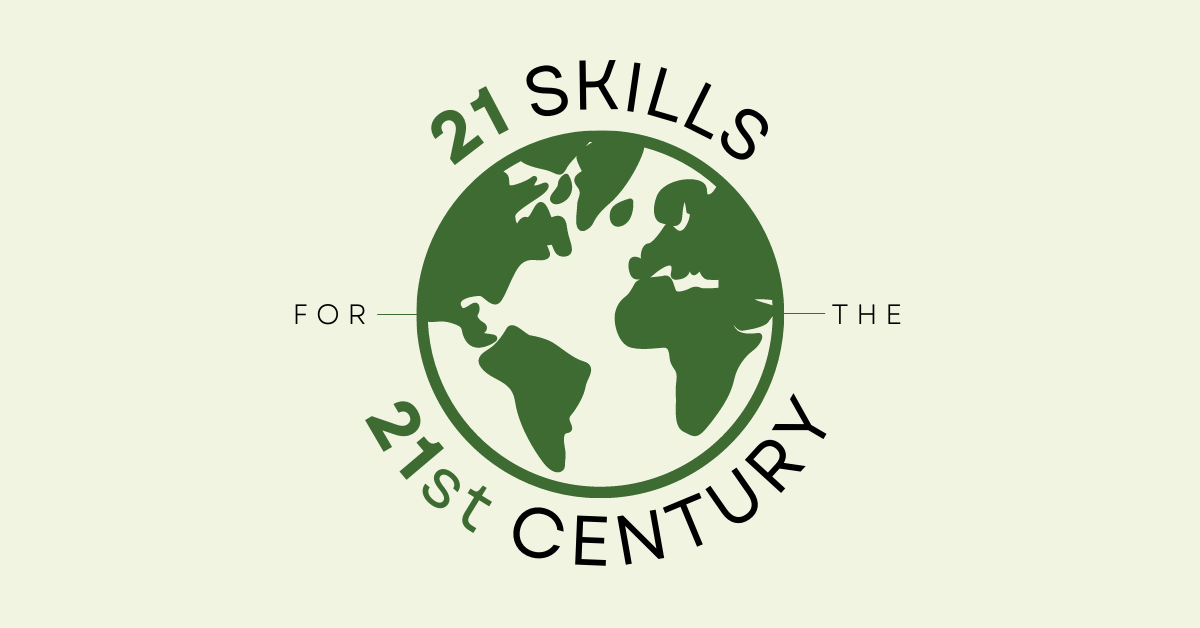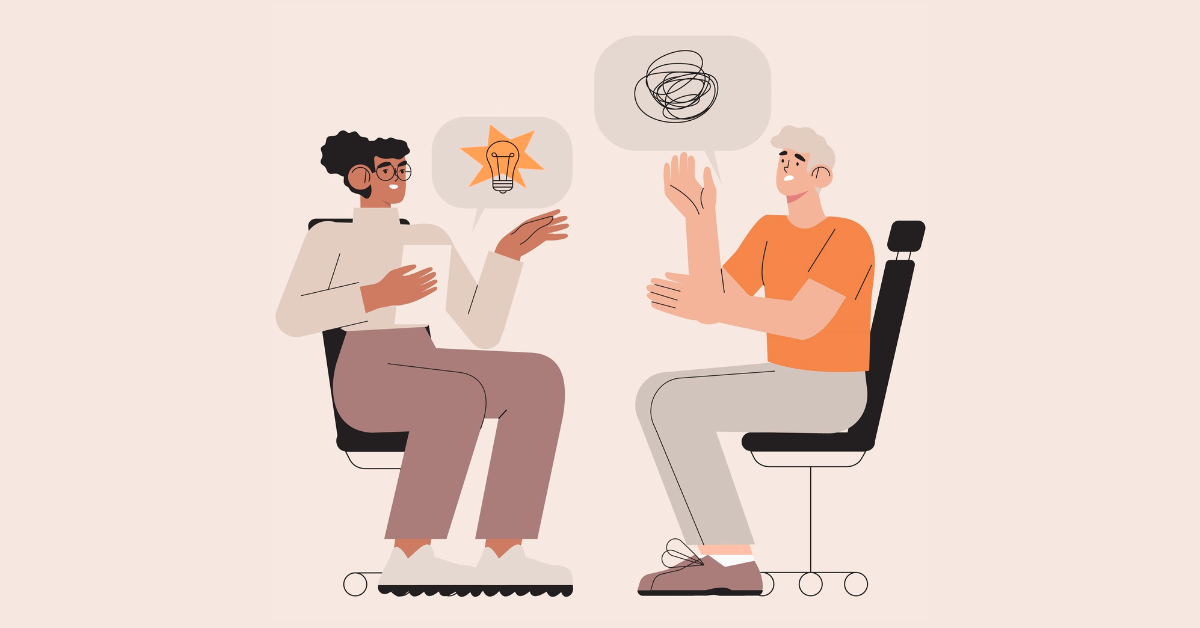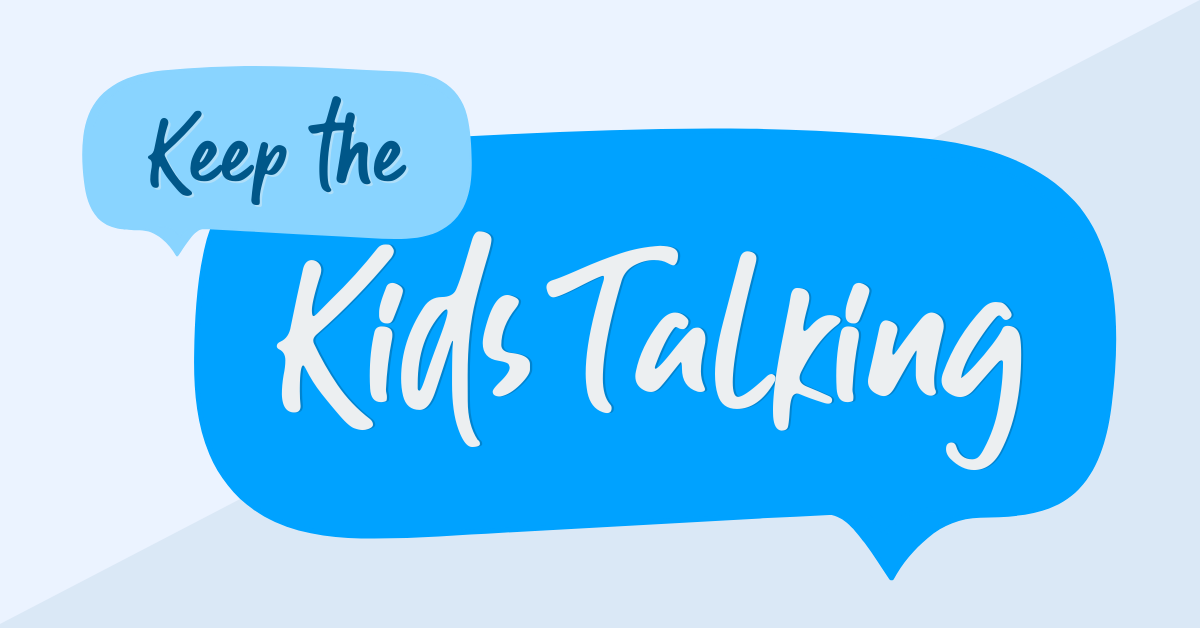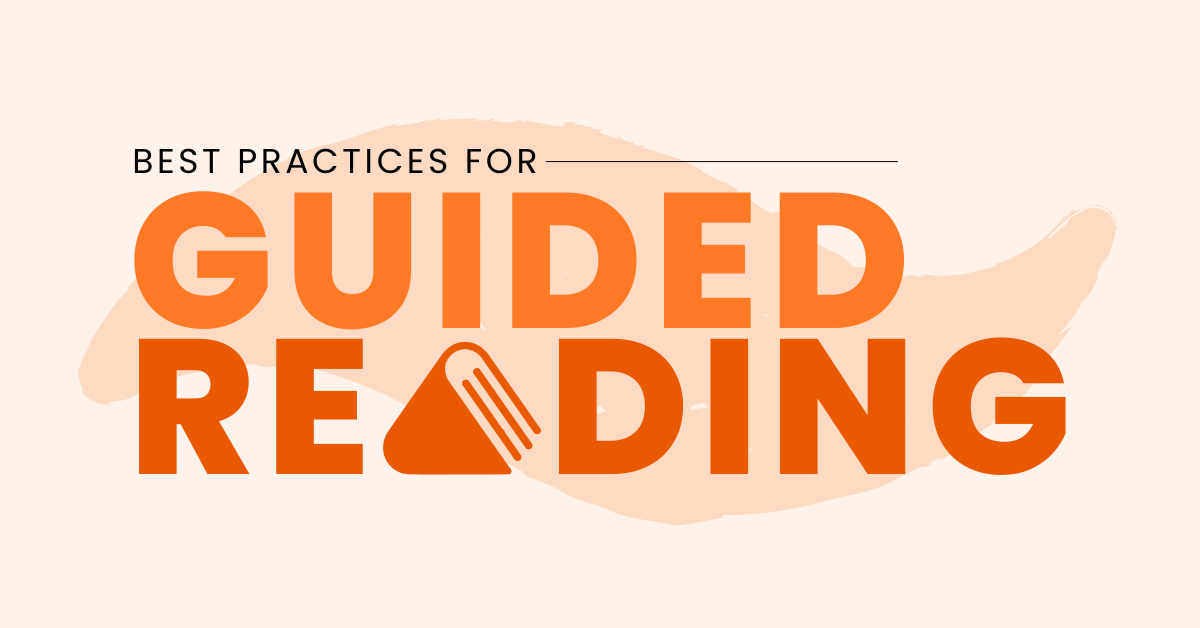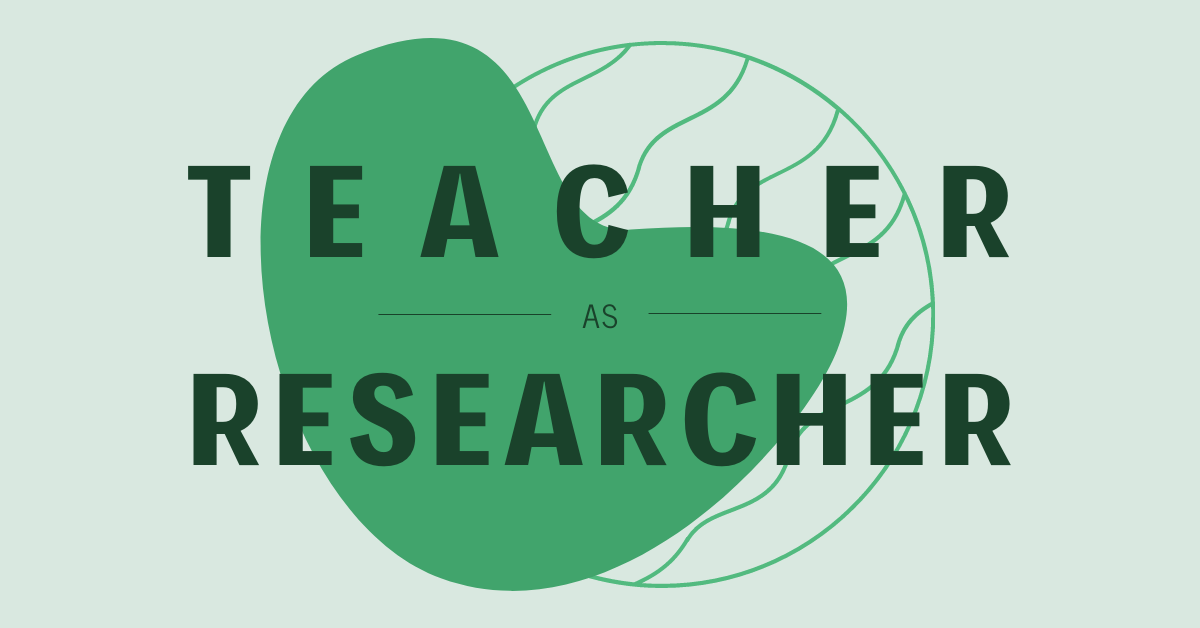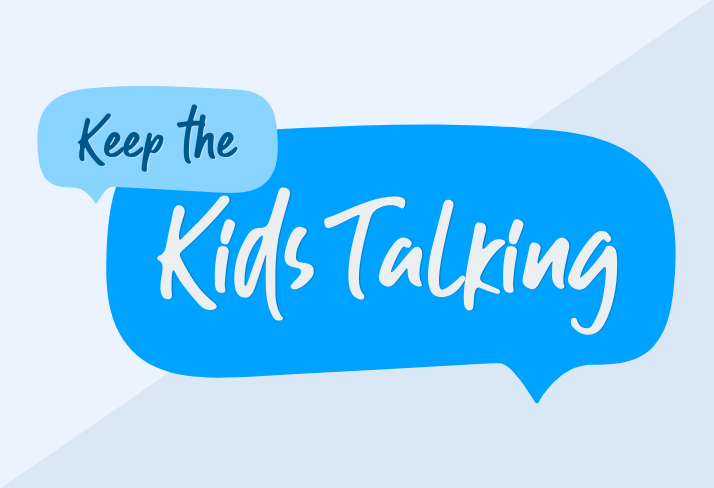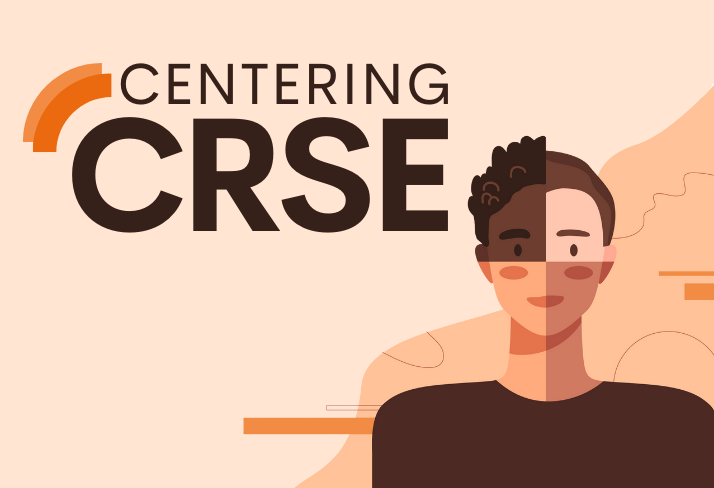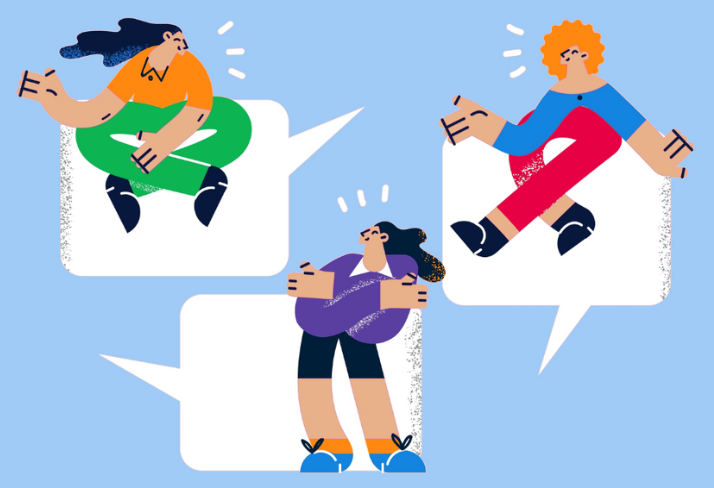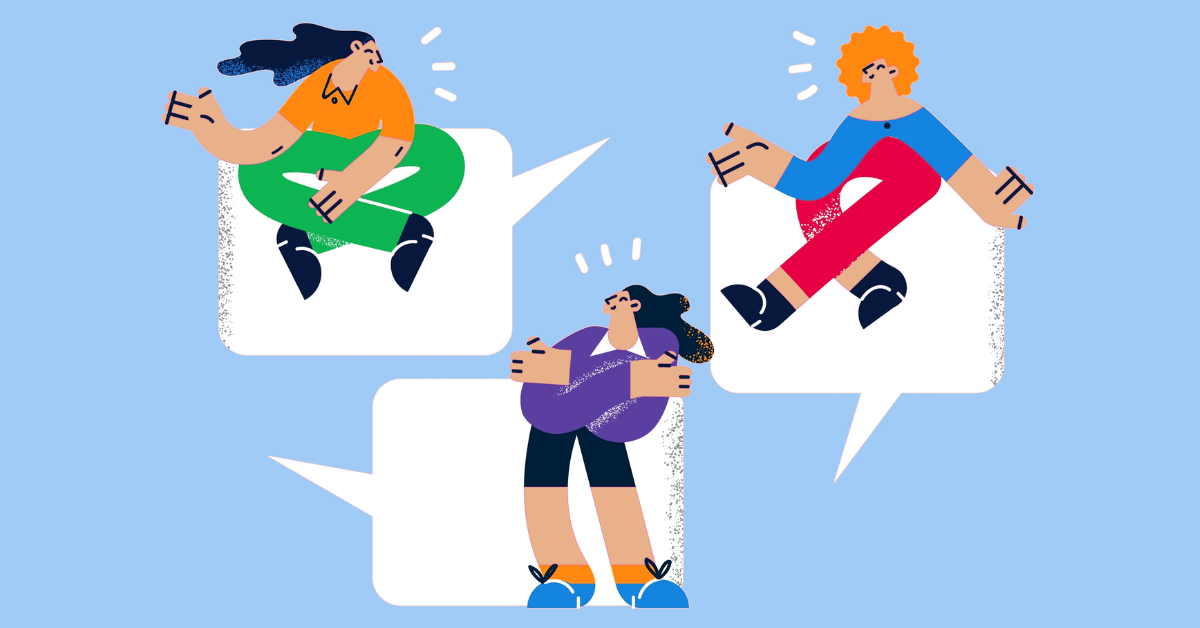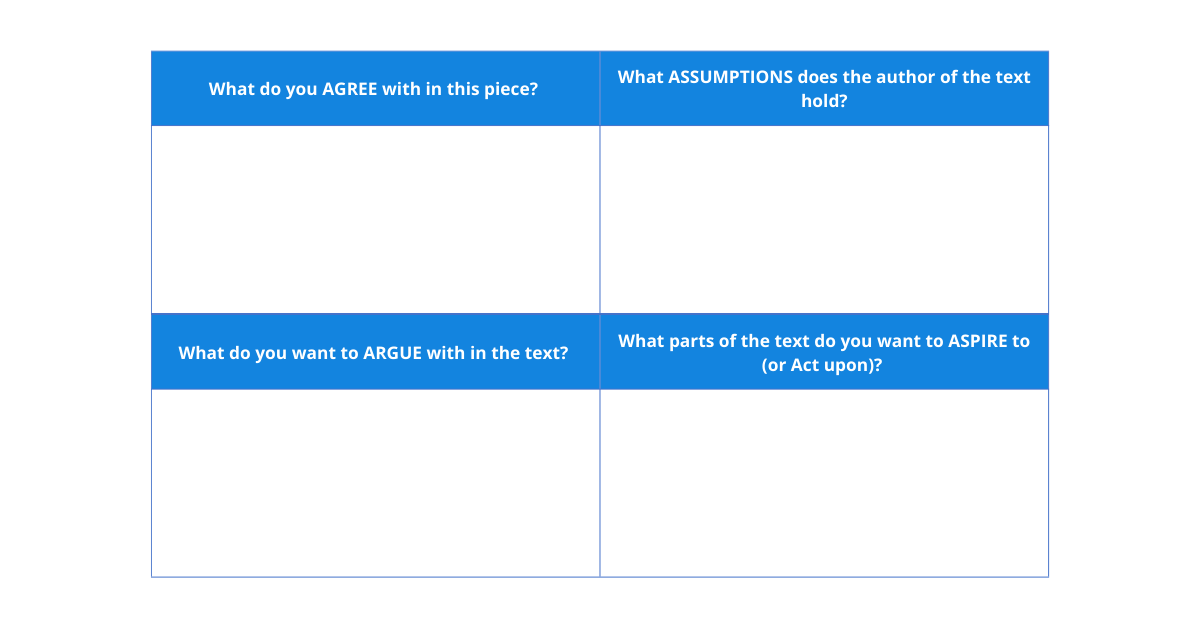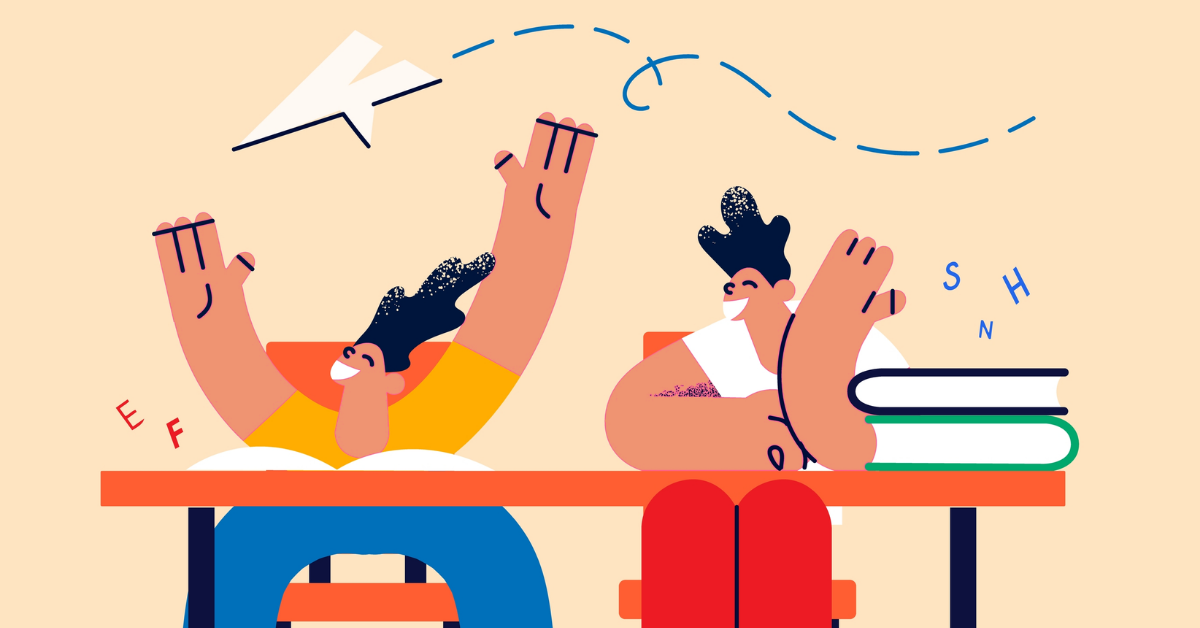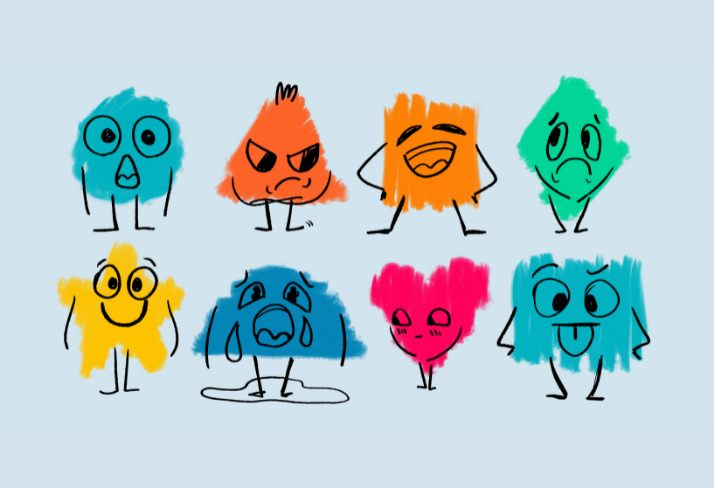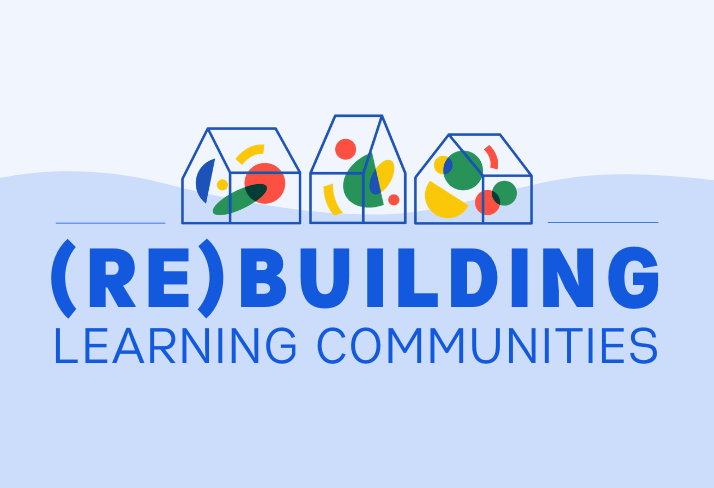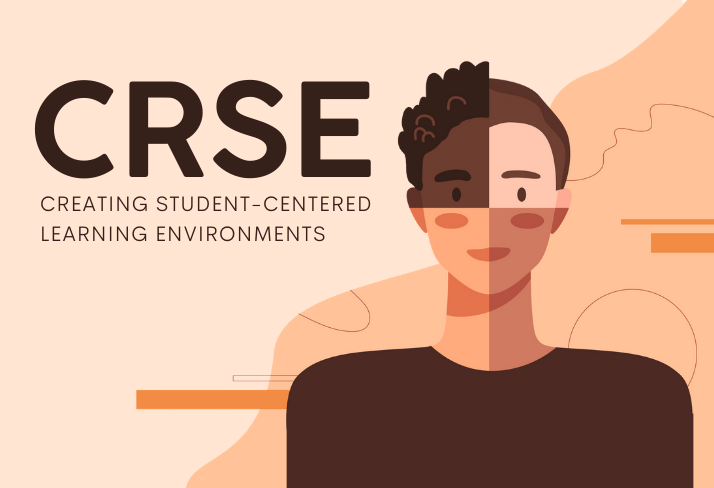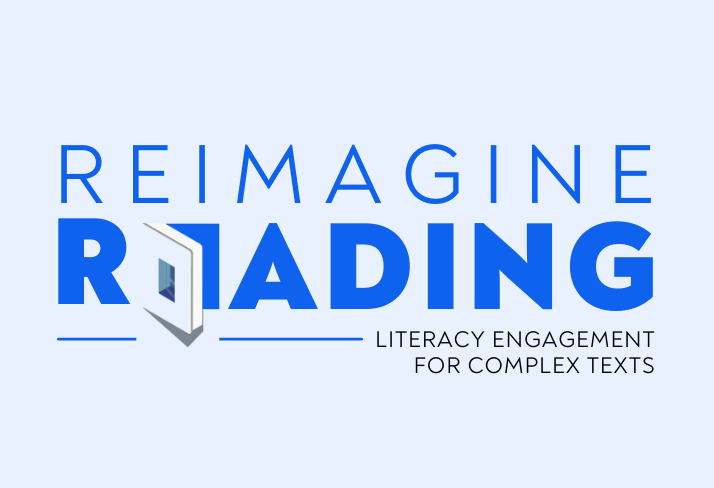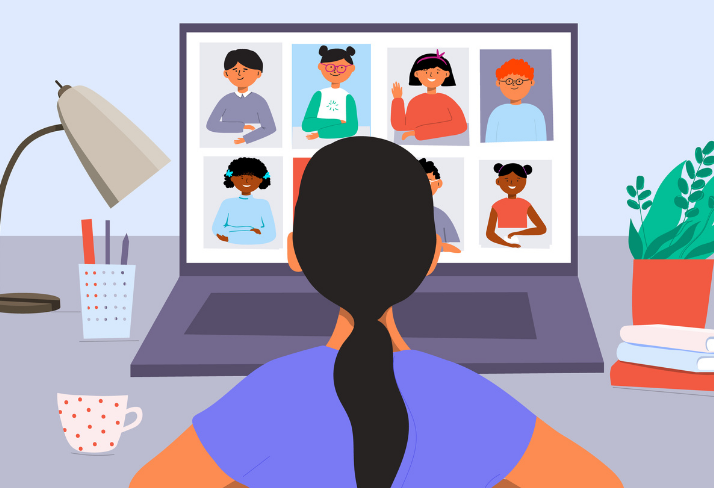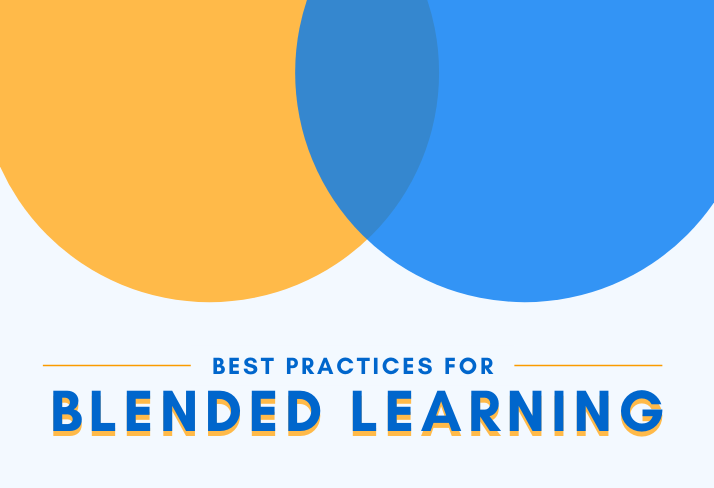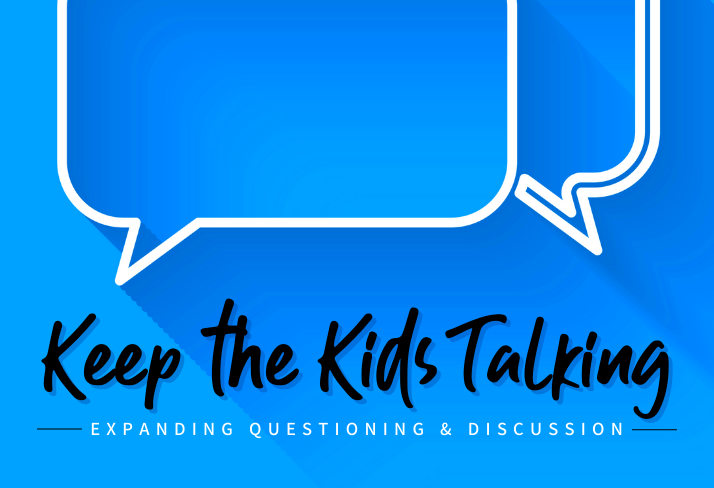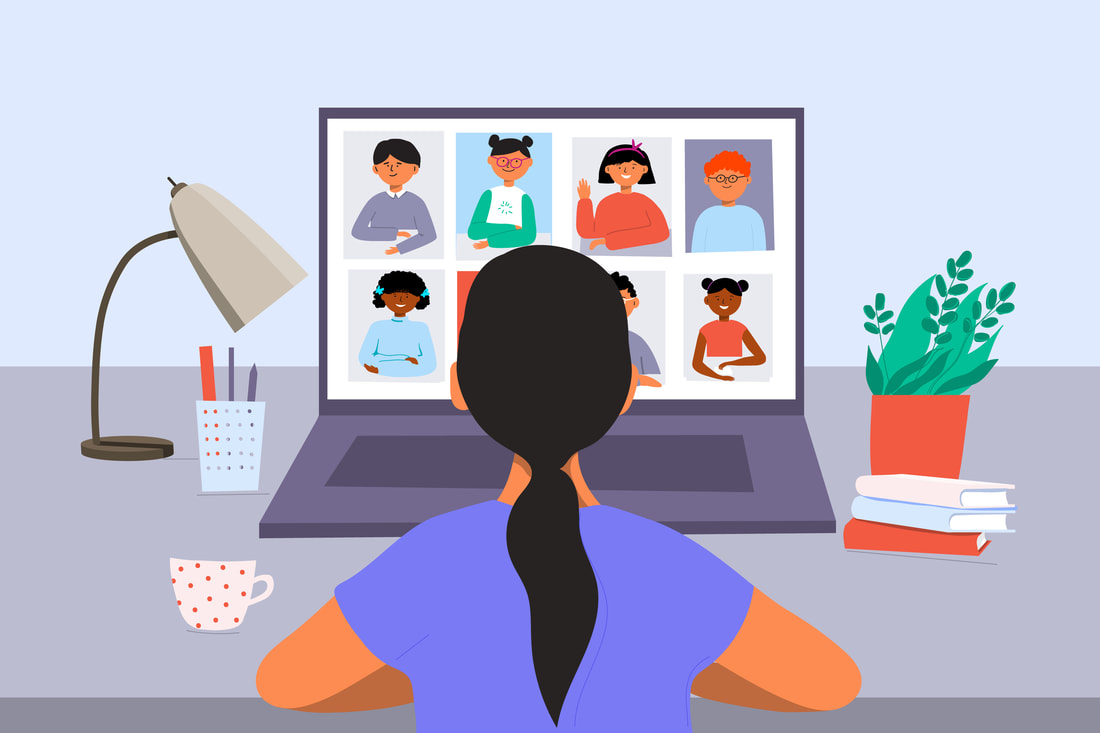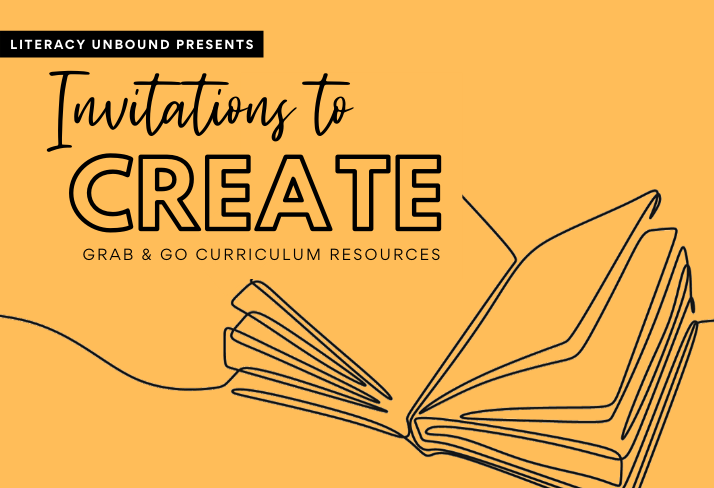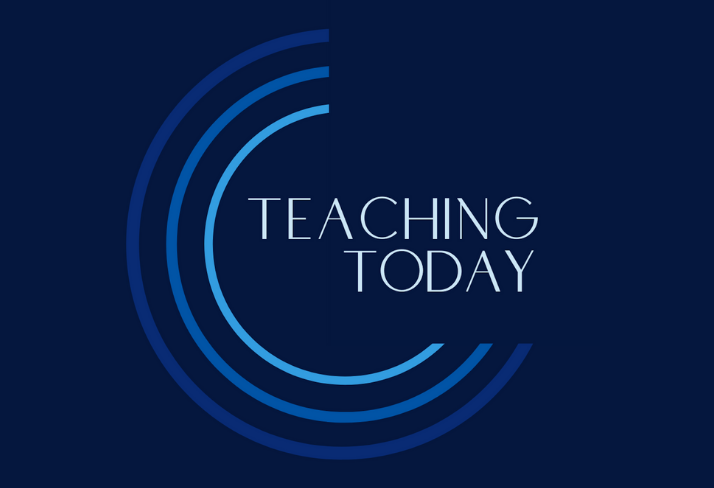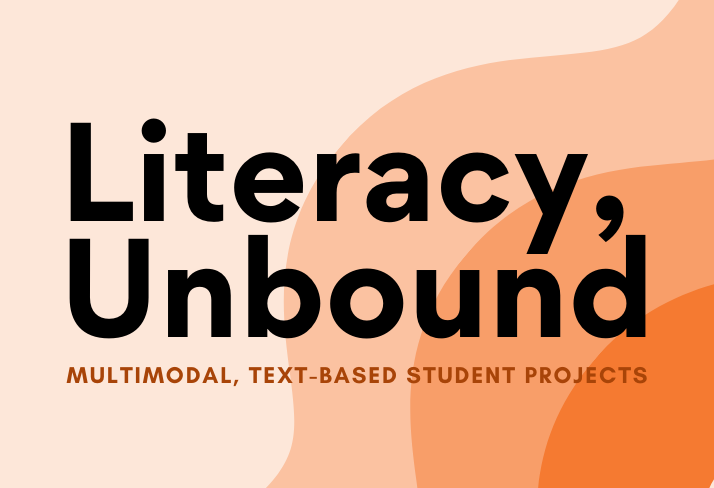|
Turn the obstacles created by shifting learning styles into opportunities for adaptation and innovation.
When it comes to education, every era has its defining tools and methods, each playing a central role. From the iconic chalkboards that once graced classroom walls to the overhead projectors that illuminated our lessons, these tools were fundamental in shaping our educational approaches. However, as technology continues to progress, these traditional tools are gradually being replaced by more advanced alternatives.
As such, education must evolve to keep pace with these changes, and teachers need to adapt to new technologies and teaching methods to effectively meet the needs of their modern learners. In a world defined by 21st century innovation, we can no longer rely on 20th century teaching methods. Yet, embracing change is no easy feat! In a whirlwind of shifts, resistance often arises, especially from educators who’ve experienced firsthand the loss and excitement of these transitions. Many educators find themselves grappling with the need to let go of cherished beliefs and teaching methods rooted in their own experiences and identities. In my recent conversations with teachers, a common sentiment emerges: the perceived disinterest of students in reading, their struggle with mastering basic skills like multiplication tables, and their apparent lack of engagement in critical thinking. These concerns are undoubtedly valid. However, as educators, we must confront the reality that today's students interact with reading, interests, and motivations in ways vastly different from previous generations. Accepting these changes can be difficult, especially when they seem to highlight deficiencies. But if we examine the changes and evolutions of trusted teaching methods of the past, we can gain insight into how technology continues to shape our ways of living and learning, setting the stage for understanding which teaching methods have become obsolete in today's digital age. The textbook
Modern textbooks became a staple starting in the 15th century. These trusty learning companions were used by teachers and students for generations and were praised for their wealth of knowledge evident in their heavy weight. Carrying a textbook was once a symbol of academic dedication, but in today's digital world, textbooks alone do not suffice. They're too basic for modern learners who want interactive, multimedia experiences, and as technology advances and access to information increases, textbooks just can't keep up with the engaging and personalized learning experiences students need.
The encyclopedia
In the 16th century, the encyclopedia was introduced. It was once praised as the most powerful source of human knowledge, jammed between two hardbound covers. I remember being fascinated by Encyclopædia Britannica and waiting in line to use the limited supply in our classroom. I would turn the delicate pages to find answers to all sorts of questions. But today, hard copy encyclopedias are obsolete. Students now have access to the vastness of the internet for instant information and real-time updates.
Library catalog systems
In the 19th century, we experienced the creation of the modern library catalog system, with its neatly indexed cards and Dewey Decimal classifications. It was once the key to the world of knowledge within a library's walls — it guided students through the maze of shelves, leading them to the books and resources they wanted to read. I distinctly recall my visits to the library, armed with my own shiny library card, seeking advice and assistance from the librarian, and paying fees when I missed the return deadline.
Yet, with the advent of digital databases and online search engines, the catalog system is a symbol of the past, replaced by instant access to a wealth of information at our fingertips. Furthermore, the act of reading itself has undergone a significant transformation. While some still cherish the smell and feel of a physical book, like me, checking out physical books has become a distant memory for many. Many people have embraced the convenience of accessing articles, podcasts, audiobooks, and other digital formats. The act of "reading" has expanded to include a wide array of mediums, reflecting the changing preferences and lifestyles of readers and learners in the digital age. The only constant is change
These transformations reflect the resilience of education in the face of technological advancements, underscoring that with change comes the potential for growth, adaptation, and progress. Librarians have evolved into “digital resource coordinators,” “media specialists,” and “information specialists,” guiding learners through the digital landscape. And traditional book companies have transitioned to online platforms for greater accessibility and customization.
Today, we're facing rapid technological changes, like YouTube, TikTok, and social media platforms such as Facebook and Instagram. There's also a growing presence of Generative AI, which, like changes in the past, can feel daunting. These advancements are reshaping the learning landscape, with some fearful of the implications for originality and personal privacy, while others view them as an opportunity to revolutionize education by offering personalized learning experiences for every student. The importance of reflection for innovation
I've been encouraging teachers to ask: What are the goals I have for my students? Where do these goals originate, and do they align with the demands of the 21st century? These inquiries prompt us to determine when adjustments are necessary, whether it involves letting go of outdated methods, revising our approaches, or affirming current practices.
Recently, I've observed educators designing innovative and relevant projects that deeply engage their students. These projects often culminate in products inspired by social media or TikTok videos, and sometimes incorporate QR codes for added interaction. For example, in a history class, students were creating short TikTok-inspired videos depicting key historical events or figures, using creative props and costumes to make the content engaging and memorable. These challenges can encourage active learning and collaboration among students, as they work together to brainstorm ideas and produce their videos. In a science class, I witnessed students engaging in a "Science Experiment Challenge" where they were tasked with filming themselves, with help from the technology teachers, conducting simple experiments and explaining the scientific principles behind them. This not only reinforces learning but also allows students to showcase their understanding in a fun and interactive way. In an art class, a teacher had her students showcase their creative projects by creating a series of Instagram- inspired posts including captions and comments, allowing them to document their artistic process from conception to completion. And in an ELA class, a teacher shared how she has been using AI platforms, like Brainly, to provide additional support to her students by offering personalized tutoring sessions, answering questions, and providing explanations on various topics, supplementing traditional classroom instruction. These examples demonstrate teachers’ efforts to stay updated on technological changes and connect with students by leveraging their interests.
Regardless of your sentiments around these shifts and changes, their impact on students cannot be denied. Therefore, it's crucial to shift our focus towards supporting students in developing the skills and competencies necessary for success in the modern world. Rather than viewing students' changing learning styles and interests as obstacles, we must see them as opportunities for growth, adaptation, and innovation.
By meeting students where they are and embracing their unique perspectives, we can foster a learning environment that encourages curiosity, critical thinking, and engagement with the world around them. This approach not only prepares students for the challenges of today, but also equips them with the resilience and adaptability needed to thrive in an ever-changing future.
References
The Journal of American History Textbooks Today and Tomorrow: A Conversation about History, Pedagogy, and Economics Encyclopedia Britannica
Find inspiration for classroom discussions that encourage students to make their voices heard.
“So, what are your thoughts? Talk with each other.”
I remember asking this question many times, always expecting it to be greeted immediately and enthusiastically by the voices of many students, clamoring to share all at once. In some classrooms, that was the case. In most others, a deafening silence would stretch for several minutes. Eventually, I’d ask a new question or encourage them to write down their answers and turn them in so that I could read them. Most students had an abundance of thoughts, I discovered, when they handed in their written responses. I desperately wanted to create a culture of discussion in my classroom, one in which students could not stop talking to one another about our texts and topics of study. But, this open-ended question asking them to share their thoughts never seemed to stimulate the kind of discussions that I was searching for. The question for me became, how can I begin to create a culture of discussion in my classroom?
Questioning
To explore that larger question, I began with a smaller one: what kind of questions were the most exciting for me to answer as a learner? We all may have different answers to that question, and I encourage you to take a few moments to think or to write about what your unique answer might be. In my own process of reflection, I discovered that I am enthusiastic to answer questions that are open-ended: those that invite many different perspectives and clearly do not have one “correct” answer. I also love questions that get me thinking about something that hasn’t occurred to me before: thought-provoking questions that feel relevant to me in some way, connecting to my interests, my recent thought patterns, or some facet of my identity. And, most especially, I love answering questions when I can be assured that someone else around me will answer, too. There is something vulnerable about sharing thoughts and ideas in a classroom space, especially when there is no guarantee that others will do the same. Out of my own reflections came clear pathways forward — new things to try.
Paired discussion
The first protocol that I embraced consistently became the turn and talk. Rather than invite students to share in front of the whole class, I’d invite students to turn and talk to one person next to them, taking turns to share their responses. I can appreciate how many teachers mock the turn-and-talk discussion protocol as a favorite of administrators who believe that this discussion technique will solve all educational dilemmas. As teachers, it can be easy to become cynical quickly about those strategies most commonly suggested. With that said, the turn-and-talk protocol transformed academic talk in my classroom. By the third or fourth time that I implemented the strategy, I was stunned by all the ideas my students were willing to share with each other that they wouldn’t share with the whole class. But, it also made sense once I implemented the protocol, as so many things in retrospect often do. It’s much easier to share with a peer than with one’s teacher. It’s much easier to share with a peer when you know that they will share in return with you. Eventually, I knew that I wanted the turn-and-talk to grow into small group discussions. So, how?
Small group discussion
“Save the Last Word for Me” was introduced to me by a colleague who was devoted to building a culture of discussion in her classroom. Her explanation was simple, and I do my best to recreate it here:
I never implemented the protocol to fidelity, but it inspired lots of small group discussions in my classrooms. What if I tried it with images? With documents? With word problems? What if the groups were slightly larger or smaller? To me, one beautiful thing about teaching is that every protocol is an invitation to create and to re-create things until they feel like our own. I invite you to do the same — what small group discussion strategies might this one protocol inspire?
Whole class discussion
I never gave up on my dream of whole class discussions. As many English teachers can appreciate, the Socratic seminar is often celebrated as the pinnacle of literary discussions. After many months of paired and small group discussions, I was terrified that our first Socratic seminar of the year would be a return to the silence. Students are always full of surprises. “But did you look here at what she says on page 23? It makes me think that….” “I’m not sure I agree, but that’s an interesting point. Have you thought about….” “That’s a good point. Maybe we should think about….” The voices, the laughter, the thoughts swirling around — it was everything that I had hoped for my students in a whole class discussion. I described this moment of success with a fellow teacher, expressing my surprise and amazement about how successful our first Socratic seminar was. He laughed, “I’m not surprised. Your kids are always talking.”
An invitation
Creating a culture of discussion was not a linear experience for me as a teacher. I learned from the wisdom of fellow teachers and, no matter what protocols I used, there were days in which silence felt inevitable. But, I did get my students talking. If you’re interested in thinking more about how to create a culture of discussion in your own classroom, I invite you to join me online at Keep the Kids Talking, where you can reflect on your own experiences, and also acquire new, implementable discussion strategies. I hope to see you there.
Encourage meaningful reading habits as you ask students to engage in a dialogue with their text.
Over the past few years, I have heard more and more middle and high school teachers agree about how difficult it is to “get kids to read." I have observed myself that few students seem to be reading full length books independently, and by choice. Of course, there are so many reasons for these observations.
Let’s zoom out a bit to think about the state of reading for most of our students: in the past, reading was not only a major form of entertainment, but a crucial source of information. Time for reading was not in competition with an expansive, alluring digital world offering games, web surfing, Tik Tok, Instagram, endless TV and YouTube channels, etc. Even as adults, we know how easily accessible and comforting these modalities are. Technology offers us so many easy, even addictive options. Technology has also made it easier for students to “read” or pretend they have read an assigned text by scanning summaries of chapters, Googling quotations from the text, watching video versions, etc. Information that we may have needed to access by reading a book is now available at the click of a finger or by saying a few words to AI. We have all been there — we even have a term for this, tl;dr, or too long, didn’t read. Research confirms my own observations that few young people are reading on their own or consider “reading for pleasure." The Pew Research Center asserts that, “few late teenagers are reading many books” and a recent summary of studies cited by Common Sense Media indicates that American teenagers are less likely to read ‘for fun’ at seventeen than at thirteen.” The pandemic also seems to have derailed some students’ academic reading habits, which have proven to be like muscles that need to be exercised more regularly than we previously knew. All of this means that if we want our students to read, to become strong, confident readers, and maybe even enjoy reading, it is crucial for educators to make reading meaningful and relevant for our students, and not simply “cheat proof."
Encouraging students to read
Offering students choices of relevant books to read and discuss together in book groups or pairs is a fantastic way to encourage them to engage in reading. However, most educators agree that reading a book together — as a shared “anchor text” for the whole class — can also be important and lead to powerful discussions and collective learning. Mike Epperson — a teacher with whom I work closely in the South Bronx — took the opportunity to bring a shared anchor text to his 10th grade classroom, introducing his students to Elie Wiesel’s Night. While Night is a riveting, significant story and a relevant choice for 10th graders, who are concurrently learning about World War II and the Holocaust in history class, that doesn’t guarantee that students will engage in the reading. Mike was concerned about ensuring that his students were both engaged deeply and personally in the important subject matter and took it seriously. He decided early on that he wanted students to read the entire book. Mike strategically layered his teaching unit with Night at its core, along with supports and entry points to encourage high engagement, including: background building about the Holocaust, Anti-Semitism, and Judaism, and a careful sequence of lessons that focused on a key topic in a section of the book. Additionally, to encourage reluctant or less confident readers to read daily and remain engaged in reading the whole book, Mike emphasized and taught annotation. Since the school had copies of the book left over from ordering during the pandemic, Mike was able to give each student their own book to write in and keep. These two simple pieces — students having a book of their own and an opportunity to talk back to the text through annotation — created an environment ripe for close reading and high engagement.
Encouraging students to annotate
Getting students to annotate in their actual books wasn’t as simple as Mike had expected — he recalls that “when we first started annotating, some students expressed resistance because they didn’t want to make the nice-looking book look ugly. One student compared it to writing on a beautiful painting with crayon.” However, as time went on, students were “able to find a way to annotate that helped them preserve the beauty of the original text. I believe that as students took on a self-appointed role as the book’s preservationists, they ended up developing a deeper respect for the content of the book as well.” As the students connected more personally with the book and the character of Elie, Mike began to see that the act of authentic annotation was offering students an unanticipated opportunity for creative expression. He shared that “a lot of students like drawing, and there’s a similar appeal in annotation. While annotating is not drawing, a fully annotated page is visually pleasing. Some students’ annotations are neat, symmetrical, and visually appealing in a way that suggests that students take pride in how their annotations look. I think this fosters a sense of pride in the content of their annotations, too.” Mike’s observations of his students’ annotations confirm the belief that writing as you read makes your thinking visible, and can create an engaging conversation as we talk back to the text. He puts it simply: “Annotation gives the students a more active role in reading. They get to have a voice, even if no one else will see their annotations.” The students are no longer alone with a book. They are in dialogue.
Suggestions for successful annotation
When I visit Mike’s classroom, students eagerly show me their annotations and explain the significance of both specific lines on a page and their connections to larger themes. A number of students also tell me how much annotation is helping them “remember’ and “understand” past parts of the story. They are clearly proud of their text marking and meaning-making. Based on my observations of Mike’s classes, I’d like to offer some simple tips for making annotation a successful approach with your own students:
Hopefully, you will feel inspired to introduce or continue using annotation in your classroom! As you encourage students to read with their pen and engage in a dialogue with a text, feel free to adjust any of the strategies above to match the readers and annotators in your classroom.
Four ways to cultivate student connections through stories, personalities, and interests.
It’s the first few weeks of school. New students are entering our school’s hallways and sitting in our classrooms. Fresh paper, pencils, and (hopefully) charged computers are perched on desks. Awkward glances and shuffling feet and uncertain pauses fill the air. As teachers, we are faced with this challenge: how do we begin to build a learning community in our classroom, one that invites trusting dialogue and encourages intellectual curiosity?
I often received one, seemingly simple answer: “find a good icebreaker.” An icebreaker is an activity or engagement task designed to get people talking and learning about one another — in other words, a task to “break the ice” of social awkwardness. A fellow teacher in my school swore by “Would You Rather?” as the icebreaker that had withstood the test of time, asking students to answer a series of extreme either-or questions like, “Would you rather fight a bear or a shark, and why?” I don’t think there’s one best icebreaker for all students or for all teachers. It’s difficult to know definitively what will resonate with your particular students. With that said, I knew that it was possible to find an icebreaker that invited students to get to know each other in a meaningful, personal way. Below you’ll find four activities that will help you “break the ice” with your new students and begin creating genuine connections within your classroom community.
The Neighborhood Map
Discovering & Writing About a Memory This first activity, invites students to make a memory map of their childhood bedroom, apartment, house, or neighborhood. Then, it asks students to look for stories they can share, inspired by places marked on their map. The memory map was developed by Stephen Dunning in the early 1970s and later articulated in his book Getting the Knack (1992). His workshops led to other educators across the country creating various versions of this practice, including by members of the South Coast California Writing Project. Ask students to draw a birds-eye view map, then “walk” a partner or small group through descriptions of the places on their maps. After doing so, students number and label these “story places” on their maps and choose one story to write about further. Students are invited to share their written story in a partnership or in a small group. For younger students, I encourage using some sentence starters to scaffold the sharing process, such as “This place stays in my mind because…” or “The important thing about this story is…” A possible set of directions are included here and here, but I encourage you to develop directions that will work best for you and for your students. For those who may not feel comfortable drawing their own memory map, perhaps imaginative or fictional map drawing could accomplish a similar goal of learning about your students. If writing is a central component of your classroom, consider transforming this activity into a writing benchmark for your students at the beginning of the year to gain insight into their writing abilities. This activity can work in an elementary, middle, high school, college, or even adult-education setting, and is especially inclusive for English language learning students, given the opportunity to tell stories through drawn visuals.
The Cultural Tree
Getting to Know Yourself and Your Students In this activity, students are asked to create a “cultural tree” that represents their culture. Originally envisioned as part of Zaretta Hammond’s work in Culturally Responsive Teaching & the Brain, the drawing of cultural trees asks students to identify three levels of their culture: surface level — aspects of culture you can see like food and dress, shallow culture — aspects less explicit, like concepts of eye contact and personal space, and deep culture — unconscious beliefs and norms like concepts of fairness and spirituality. My colleague at CPET, Lauren Midgette, has used Hammond’s work to write and to reflect on the possibilities it has for getting to know students, but also ourselves, better in the classroom this school year. Midgette makes the point that the drawing of cultural trees — and the discussions inspired by them — provides a healthy soil to help our students grow. Each level of culture — surface, shallow, and deep — is visualized on the tree as leaves, trunk, and roots, respectively. For younger students, I don’t think the framing of the tree as “cultural” is necessary for the activity to be an effective tool for discussion. Students could certainly label a tree with aspects of who they are that are surface (easily seen by others), shallow (not as easily seen), or deep (entirely unseen).
Telling a Story Through An Object
This third activity requires slightly more teacher preparation than the first two, but is one that I have found particularly effective with students of all ages. I created the directions to facilitate this activity — linked here, but the premise was inspired by fellow educators: objects, even the most simple ones, are imbued with our stories. First, find an ordinary cardboard box. Label it “mystery box.” Next, fix it with a bunch of objects — they can be commonplace things like birthday candles, hair ties, or chewing gum — or more particular objects, like sports paraphernalia or local fruits and vegetables. Lastly, close it and place it in a very visible place in the classroom and say nothing about it to your students until you begin class. Explain to students that inside the box are a bunch of objects that you will pull out one at a time. As soon as students see an object that reminds them of a story, memory, or experience, encourage them to start writing that story. The final thing that I pull out of the box is a slip of paper that says, “the object that you were hoping I was going to pull out.” It’s a catch-all invitation for students to write about an object close to their heart that you may not have been able to acquire. Invite students to share their stories with one another after they have written them. In my facilitation of this activity, I found that students often worried that their story wouldn’t be “good” or “significant” enough. I explicitly invite ordinary stories from students, which have never been “ordinary,” but rather extraordinary insights into the students and their backgrounds and interests. As the year progresses, I invite you to experiment with this activity in the reverse: invite students to bring in their own meaningful objects that have a personal story attached to them to add to a classroom box. They can share their objects and stories before placing them into the box.
Beginning With A Two Sentence Story
The fourth icebreaker requires no teacher preparation and the prompt for students is incredibly simple: write the beginning of a two-sentence story from your day today. This activity, as well as these questions, were introduced to me by Professor Ruth Vinz at Teachers College, Columbia University. Invite students to write in the present tense as a means to place themselves back in the moment they are writing about. Remind students that the purpose is not to assess their writing skills, nor to write the most significant story possible. The story starter can be simple, so long as it is about some event from their day. This icebreaker would work especially well for an afternoon class. Alternatively, the prompt could be modified to read, “write the beginning of a two-sentence story from your day yesterday. Even though the story happened yesterday, please write in the present tense, as though you are living the story at this very moment.” After writing their two sentences, invite all students to read them aloud in no particular order and without any further explanation. Next, invite students to consider how their stories might be threaded or connected together. Consider these facilitation questions:
Dive a Little Deeper Under the Ice
Icebreakers can be wonderful ways to start connecting with new students — they alleviate nerves and provide an entry point for relationship building. This year, I invite you to not only “break the ice,” but also to dive a little deeper under the surface, creating ways for students to connect in genuine ways through their stories, personalities, and interests. Please modify these activities — they are intended to be transformed for you and your classroom. And the best part? These activities can be used at any point in time to learn something new about your students.
Engage students in rich mathematical tasks that honor the process more than the solution.
I was recently sitting with a high school algebra teacher — who was preparing a lesson about translating sequences into functions or equations — and trying to encourage him to use this archive of visual patterns with his students. We discussed matching different groups of students to different images and asking them to try writing an equation for the pattern. As the teacher started practicing on his own, writing equations for some of the patterns that were offered, this picture came up, and we both began to struggle.
Neither of us could figure it out.
Other teachers started coming by to join: “There has to be an exponent in there somewhere...” “But just an exponent wouldn’t make sense…” “Are we multiplying the exponent? Or maybe multiplying and adding?” This had started with only one teacher, but soon there were five teachers huddled around this image, trying to find a solution. One teacher got out a marker and began writing possibilities on the board. Another started running through calculations in their head, shouting out theories. Finally, one teacher said, “Oh, it’s a quadratic!” The algebra teacher who had started with me stated, “see I can’t do this with my students, we couldn’t even figure it out”. But I had the complete opposite reaction. I was surprised at how many had engaged in our puzzle. We were all trying out different methods, debating and discussing throughout our process. This is what a math classroom should look like every day.
Making room for authentic engagement
As math teachers, it can feel scary to introduce a problem to students that doesn’t have a clear and simple solution. But how else is authentic math engagement supposed to happen in the classroom? In our example, even if we had never arrived at a solution, all the math thinking and practice we did to try and get there would have been worth the struggle. Even if a student never achieved a correct equation or solution, they still would have stretched their thinking and understanding of patterns and functions just by trying to work through the task. The inspiration for this task came from Jo Boaler’s work on Mathematical Mindsets. In her book, she reminds us how beautiful and rich mathematical thinking can be, and offers advice on how to bring that into your classroom. This task we were testing out among teachers includes many of the suggestions she offers for making rich mathematical tasks. Boaler describes these tasks as having multiple entry points, visual components, and options for inquiry and debate. As you incorporate these elements into the math tasks in your classroom, consider the following questions as you shift into a richer mathematical lens:
Our original task starts with a visual component and includes multiple methods of entry. Students have the opportunity to make sense of the visual in any way they see fit — maybe they prefer to focus on the numbers, or maybe they want to look at the way the shape of the image is changing. There are no clear steps to follow to solve this puzzle; students have to play and engage in multiple ways before they can predict patterns and solutions. Another great aspect of this task is that students of all math levels can participate and still walk away learning something from the experience. Maybe some students will leave noticing there is not a constant amount of change between the pictures. Maybe some students will consider the way addition and multiplication look different in patterns. Maybe some students will write a quadratic equation and then be able to predict future images. The possibilities are endless.
When we provide math problems that have very clear and explicit steps, we may lead students to the correct answer, but we also limit the creativity they can experience. We teach students that there is a right and wrong way to do math. We contribute to the negative feelings and attitudes many students already have about math. And lastly, we take away the fun.
Making room for rich mathematical tasks that have multiple entry points, opportunities for debate, and visual components can help make every student feel like they can one day be a real mathematician. It can help students of all levels rediscover the fun in math.
Encourage students to expand their repertoire of ways to read and respond to literature.
As someone who loves to read and write, one of my favorite things to do is annotate texts — whether it be a few scrawled words in the margins of my most beloved hardcover books or endless questions written on sticky notes falling out of flailing paperbacks, my annotations capture the spirit of my hyper-personal engagement with a text.
When I became an English teacher, I knew that I wanted my students to learn how to annotate, in part because I wanted them to capture their noticings and wonderings as they engaged in their own distinctive reading process. In “Literature as Exploration” (1995), Louise Rosenblatt wrote that every person has a unique, transactional experience when they read a text, in which they “live through” something special. I think of annotations like mementos of this special reading experience because they capture a moment in time in the transactional experience that would otherwise be lost. Every time we read a text, even if it’s one that we’ve read hundreds of times before, we encounter a new transactional experience. As we annotate and re-annotate texts, we leave behind a trail of our reading experiences: our questions, thoughts, and wonderings. I desperately wanted my students to develop that experiential, transactional trail of their reading processes.
The Traveling Text
Imagine my surprise when I discovered, as a new teacher, that my students often responded to my call for annotations with, “I don’t know how to annotate!” or “Can you tell me what to annotate for?” or, worst of all, “I hate annotating. It’s a waste of time.” I can recall my naive shock when I heard my students respond in this way. In a desperate attempt to show my students the value of annotating, I began tirelessly modeling annotation strategies and my own methods of annotation, but doing so yielded little success. With time, I developed an incredibly simple strategy for teaching my students to annotate. Essentially, I stopped teaching my students to annotate through direct instruction and, instead, encouraged them to teach one another. This instructional strategy was, in my teaching, a solution to the problem of students feeling like they “don’t know” how to annotate or that annotating has “no purpose.” I call this strategy The Traveling Text (download here). The Traveling Text is simple, requires minimal teacher preparation, empowers students, builds community, and teaches annotation skills. And implementing this strategy with your students only takes four steps.
The impact of The Traveling Text
In my teaching experience, here are some of the impacts of this strategy on my students and our classroom community:
Teaching students to read for meaning (and for pleasure) is a daunting task. Often, our students come to us already feeling like they don’t know how to read and annotate literary texts in the “correct” way, one that highlights what a teacher or evaluator might be looking for.
The Traveling Text creates possibilities for students to expand their own repertoire of ways to closely read and respond to literature. But, even more importantly, the strategy encourages students to experience a sense of intellectual community and belonging with their classmates as they share with one another written artifacts of their own transactional reading experiences.
Build a classroom culture that encourages active listening and a willingness to consider others' perspectives.
When I was a middle school English Language Arts teacher, I often asked my students to engage in debates inspired by our readings. For example, I once asked my students to read Shirley Jackson’s “The Lottery” — a short story in which a group of villagers participate in a long-standing tradition of stoning to death the “winner” of a mandatory lottery — and to debate whether or not the villagers could be considered “murderers.”
The prompt for students to “debate” with one another had its benefits: my students often became passionate to defend their beliefs and their analyses of the text, and students read the text closely to identify evidence and to justify their thinking out loud. However, notable shortcomings also arose when students engaged in the task of debate: they often became combative and indignant when others did not agree with them, and they seemed resistant to change their initial side of the argument. At any age, it can be challenging for students to admit that they have changed their minds, especially in front of their peers. Even moreso, it can be challenging for students to actively listen and to respond to others’ points of view and analyses. It requires the ability to welcome or to accept a new idea or perspective. An excellent way to foster this kind of openness in the classroom — this culture of intellectual and social empathy — is to ask students to participate in what Peter Elbow called “The Believing Game.”
Balancing believing & doubting
The task of debate often asks students to participate in what Elbow called “The Doubting Game.” The doubting game requires students to be skeptical and as analytic as possible. It encourages students to try hard to doubt ideas, to discover contradictions or weaknesses, and to scrutinize and test others’ logical reasoning. This kind of critical thinking can be incredibly valuable, but it can also foster a classroom culture that only celebrates doubting, whether that be doubting ideas presented in a text or ideas presented by others in the classroom space. Contrastingly, “The Believing Game” asks students to try to be as welcoming or accepting as possible to every idea they encounter: not only to listen to different views, but also to hold back from arguing with those different views. Further, the believing game asks students to restate others’ beliefs or arguments without bias and to participate in the act of actually trying to believe them. Elbow points out that “often we cannot see what’s good in someone else’s idea (or in our own!) till we work at believing it…when an idea goes against current assumptions and beliefs — or if it seems alien, dangerous, or poorly formulated — we often cannot see any merit in it.”. Including the believing game in your classroom does not need to coincide with the removal of the doubting game. The act of doubting — of critically thinking to develop thoughtful skepticism — is an undoubtedly important skill for students to develop in order to discern truth. But, a sole focus on doubting, as I shared from my own teaching experience, can lead to a classroom culture in which students are always inclined to doubt. This inclination can lead to rigid thinking, and an unwillingness to listen, respond, and grow. At its worst, this inclination can lead to a classroom culture in which students become hostile towards other students’ beliefs or ideas that seem oppositional to their own.
The benefits of believing
Peter Elbow, the creator of the believing and doubting games, is Emeritus Professor of English at the University of Massachusetts Amherst. He has written extensively about the benefits of methodological believing for students and teachers. He identified three main benefits for the believing game in classrooms:
Engage students in the game of believing
The opportunities for students to participate in the game of believing are endless. I offer here a few suggestions for simple ways to engage students in the game of the believing.
How to implement discussion opportunities that help students solidify their learning and connect with peers.
We’ve all had moments where getting students to talk has not been a problem, but when it comes to academic conversations in the classroom, it can be hard to keep the conversation going. Students might be unsure of where to go next, how to change the topic, or even questioning what discussion is good for. Educators might be asking themselves the same questions! What are the advantages of discussion in the classroom, and how can we encourage students to facilitate their own meaningful conversations?
Why discussion?
First, let’s talk about the importance of discussion. In their book, Academic Conversations: Classroom Talk That Fosters Critical Thinking and Content Understandings, Zwiers and Crawford note that conversations foster all three language learning processes: listening, talking, and negotiating meaning. Not only can these skills be found in the Common Core State Standards (CCSS), but they are also skills we use every day in our own conversations, whether they are academic in nature or more casual. Conversation opportunities give students an authentic space to practice new vocabulary, solidify content learning, strengthen argumentation skills, and connect with their peers. Discussions also need to be connected to some rigorous questions. What makes a rigorous question? Check out the work of my colleagues Jacqui Stolzer and Dr. Laura Rigolosi to explore how one high school is constructing their own definition of rigor, in service of developing high expectations and meaningful work for their students.
What can I do to encourage discussion?
As educators, we can purposefully build these conversation opportunities into our lessons, and even beyond that, we can highlight and model talk moves for our students. Parsing out ways to make a conversation meaningful and creating a guide for students can be a powerful way to ensure they are not only learning content through discussions, but becoming effective communicators as well.
Where do I start?
Below is an example of how you can start to plan, practice, and implement more student-led discussions in your classroom.
After you’ve had time to practice a few different discussion skills, put them together. Consider pairing students with roles; is someone practicing the role of “Devil’s Advocate”? How about moving the conversation forward when there seems to be a lull? The more students practice these roles, the more natural they will become.
Don’t have the time? Teaching is more than a full-time job, so if this seems like something you really want to try but you just don’t have the time to go through all the skills yourself, check out the work done by Uncommon Schools in their Habits of Academic Discussion Guide. You can also check out Keep the Kids Talking, which offers self-paced opportunities to examine questioning & discussion practices and receive feedback from our coaching team. Happy discussing! 10/31/2022 Centering Students for Literacy Engagement: Teacher as Interdependent Curator & Bridge-Builder
Exploring the connection between instructional autonomy and student engagement.
Excerpted from Centering Students for Literacy Engagement: Voice, Choice & Identity, A Review of Literature for Behind the Book, conducted by the Center for Professional Education of Teachers at Teachers College, Columbia University.
Teachers who engage in the design of their own instructional goals understand the direct link between engagement, literacy, and content knowledge. They understand that when students are engaged, there is no limit to their learning, which is why it is such a powerful motivator. Teachers are also keenly aware that how they create visible and invisible space for learning to take place has an impact on student engagement. Everything from how a classroom space is organized, decorated, and maintained has an impact on how well students can physically interact in the space. Relationship building is also critical in the classroom, and the research indicates that fostering non-evaluative literacy experiences creates opportunities for students and teachers to more deeply engage in reading and writing.
Essential factors in engagement
In a research review on literacy engagement, produced by The Center for Professional Education of Teachers (CPET) in collaboration with Behind the Book, we analyzed previously published reviews of literature and research studies on literacy engagement. Throughout the literature, student voice, agency, and confidence emerged as essential factors that lead to increased literacy engagement over time. While many attributes contributed to increasing student voice, choice, and agency, six high leverage areas surfaced: student voice, student agency, student confidence, teacher autonomy, learning environment, and relationship-building. Refer to our companion article to read about Student Voice, Choice & Identity. How do you incorporate these in your practice? What support might you need to deepen your understanding and implementation of these attributes?
Teacher autonomy
Decision-making ideally involves all stakeholders in a school community. The unique role of teachers positions them as professionals in their content areas and the consummate experts of their own classrooms. There is a strong connection between student engagement and how a teacher perceives themselves as authors of their classroom spaces — especially when it comes to teacher autonomy. The concept of professional independence and decision-making is central to motivating teachers to think critically about what, why, and how they’re engaging with their students, which increases their sense of personal and professional responsibility. Teachers navigate their choices within the systems and structures of their districts, school, and department. Educational policies affect the everyday experience of teachers and can construct barriers to teachers exercising autonomy in their classrooms. The shift away from autonomy and professional freedom in K-12 schools has had a dramatic impact on teacher engagement, creativity, and organic professional evolution. Policies that acknowledge teachers as experts will implement systems and structures designed to increase decision-making opportunities on every level, from classroom to school to district. Teachers immersed in the design of their own instructional goals understand the direct link between engagement, literacy, and content knowledge. They understand that when students are engaged, there is no limit to their learning, which is powerful for both teacher and student. When a person has a high level of efficacy in their work, they believe that their time and effort will result in a desired extrinsic or intrinsic reward. For educators, autonomy and efficacy go hand in hand. Teachers are most effective when they have autonomy (decision-making power and the professional responsibilities that come with that power) and efficacy (the belief that their time and effort will generate their desired reward). The effort and self-determination of teachers contributes to their own sense of autonomy and to their students’ success. Teacher autonomy is not something that can be developed overnight, especially in communities where there has been tight control on curriculum, instruction, or teacher style. Schools or districts looking to increase teacher autonomy may want to make an investment in professional development for teacher leaders. Starting small and then building with a team is a great entry point to increasing autonomy for some, and creating a sustainable process for others to develop more autonomy. It is important to remember that teacher autonomy does not mean everyone does anything they want at any time, but rather that teachers are able to exercise professional freedoms for instructional and curricular choices focused on the responsibility of meeting students’ needs. This process can be developed and replicated. Schools interested in developing teacher autonomy can first focus on Department or Content area or grade level teams and develop a structure for meeting together, facilitation, and shared research. As teachers learn more about their field, they are better equipped to make decisions grounded in research. Instructional autonomy leads to the creation of a dynamic learning space, an increased growth mindset and a mindset towards social justice.
Learning environment
If we think of the word environment, as in habitat or place, the learning environment becomes the space where learning takes place. Curating a positive learning environment requires educators to consider how students learn best, under what conditions their learning can be maximized, and what disrupts the learning environment. Once these questions are answered, educators must use their available resources to design the physical or virtual space to create that environment. It’s important for teachers to think critically about creating a space for each student that provides access to resources, manipulatives, and intellectually stimulating tasks. This is commonplace in most elementary school classrooms which utilize their classroom spaces for strategic academic interactions — like the reading rug, the classroom library, and the conferencing table for students to work with their teachers individually or in small groups. All teachers create and cultivate learning spaces in how they interact with their students, how they utilize the space they have, and how they invent ways for students to interact with texts together. Rituals and routines play an important role in creating a learning environment that increases student literacy engagement. With a specific eye towards supporting English Language Learners, we can think beyond the physical resources found within a classroom space and focus on having a mindful routine, creating dynamic personal relationships between stakeholders, and developing instructional materials that are culturally and cognitively responsive to students. Additionally, when surrounded by physical texts and images of texts in the classroom spaces, students are more likely to engage in reading on their own. Implementing discussion is an integral part of the reading and writing process. When students discuss what they’ve read with their peers, it enhances their understanding, and their interest in the text. When students spend time and effort in retelling what they’ve read, creating a response to their reading, or synthesizing the text in new ways, their energy and effort has a direct correlation to their engagement in the reading itself. School and district leaders can support teachers to think deeply about their learning environment by being explicit about the resources available to teachers, as well as clarifying a theory of action that articulates how students learn best and translating that theory into an action plan for the learning environment. Beginning with the theory of action, schools that take the time to develop a shared understanding and a shared approach to learning also reap the benefits of a faculty and staff who are aligned in their mindset and approach and as a result create culture and environment quickly. After articulating the theory of action, schools need to develop an implementation plan, and an accountability plan. How will they see their values come alive in the daily interactions across the school? How will they hold teachers and other school staff members accountable to their ability to translate vision into action? Resources may vary, but the constant in any educational setting are teachers and students, together.
Relationship building
Relationships support building bridges between challenging content and critical skills. The relationship provides an avenue for teachers and students to bridge differences and bond through shared experiences. These bonds become a highway for academic support and interventions. Teachers with a high level of professional freedom typically have the confidence and the creativity to create a positive and engaging learning environment, which will in turn create personal and social spaces for students to find themselves as readers. Those personal and social spaces are nurtured through student-to-student and student-to-teacher relationships. Sharing reading ideas is especially motivating for students. Whether there are formal or informal conversations, teachers and students who read and discuss shared texts create shared experiences and shared memories. These experiences create strong bonds between teachers and students and inform their identities as readers and writers. When teachers and school leaders want to increase engagement through relationship building, focusing on social-emotional learning can be a great entry point. Creating spaces for students and teachers to identify their feelings within a given assignment can avoid misunderstandings that develop hurt feelings and divide teachers and students, impacting culture negatively. For decades, teachers have found that stories are ways to connect students to themselves, to each other, and to their larger community. Reading and writing are both connected to an audience which makes the act of either an experience in connection. Supporting students academically must include supporting students relationally. When students are able to connect with themselves and their classmates; when they connect with their teachers and count them as caring adults in their lives, they have essential support to then connect with texts that will become the driving force of their learning. The real and deep need for strong relationships is a key component to student engagement in reading and writing.
Download the white paper: Centering Students for Literacy Engagement: Voice, Choice & Identity, A Review of Literature for Behind the Book, conducted by the Center for Professional Education of Teachers at Teachers College, Columbia University.
About Behind the Book
Behind the Book was founded with an instinctive sense that getting kids excited about reading could have a significant impact on their academic (and nonacademic) careers, encouraging depth and freedom of thought, a hunger for knowledge and an understanding and appreciation for worlds beyond the one they know. In the years since Behind the Book began scheduling author visits, programming has expanded and evolved to include art projects, field trips, dramatic activities, the publication of student anthologies and more. About the Center for Professional Education of Teachers (CPET) Sponsored by Teachers College, Columbia University, internationally renowned research university, CPET is a non-profit organization that is committed to making excellent and equitable education accessible worldwide. CPET unites theory and practice to promote transformational change. We design innovative projects, cultivate sustainable partnerships, and conduct research through direct and online services to youth and educators. Grounded in adult learning theories, our six core principles structure our customized approach and expand the capacities of educators around the world.
A look at high-leverage areas for student engagement in reading and writing.
Excerpted from Centering Students for Literacy Engagement: Voice, Choice & Identity, A Review of Literature for Behind the Book, conducted by the Center for Professional Education of Teachers at Teachers College, Columbia University.
When it comes to compliance vs. engagement, we can generally agree that compliance is about conforming, yielding, adhering to cultural norms, and cooperating or obeying. Compliance is focused on a mindset of teachers (or adults) having power over students, rather than empowering them. Whether we’ve recognized it or not, many schools are dominated by compliance-oriented structures which often mimic the behaviors of engagement. When schools structure how students enter, exit, move throughout the building, where they sit, how they sit, when they can go to the bathroom or eat food, the learning environment is dominated by a power-over culture which has an impact on authentic student engagement.
Engagement, on the other hand, is more difficult to define. Research on engagement and theories of engagement date back over 50 years and come primarily from perspectives in the fields of psychology and sociology. Each field has contributed theoretical frameworks designed to articulate what engagement is, how it works, how engagement breaks down, and how to generate it. We may understand the theories behind engagement, but can we articulate what engagement looks like for students in school, with respect to literacy through reading and writing specifically? A focus on literacy engagement is critical because without a personal and intrinsic motivation to read or write, school becomes a space that stifles student growth and prioritizes compliance over engagement. When students can develop a personal, authentic engagement in reading (taking in information and ideas) and writing (expressing information and ideas), students can develop sustainably positive experiences in school that develop their self-efficacy and self-confidence.
Essential factors in engagement
In a research review on literacy engagement, produced by The Center for Professional Education of Teachers (CPET) in collaboration with Behind the Book, we analyzed previously published reviews of literature and research studies on literacy engagement. Throughout the literature, student voice, agency, and confidence emerged as essential factors that lead to increased literacy engagement over time. While many attributes contributed to increasing student voice, choice, and agency, six high leverage areas surfaced: student voice, student agency, student confidence, teacher autonomy, learning environment, and relationship-building. Refer to our companion article: Centering Students for Literacy Engagement: Teacher as Interdependent Curator & Bridge-Builder to read more about teacher autonomy, learning environment, and relationship building.
How do you incorporate these in your practice? What support might you need to deepen your understanding and implementation of these attributes?
Student voice
Student voice can be cultivated through classroom culture, through reading, and through writing. Classroom culture accumulates the small, large, formal, and informal ways that students interact with one another and their teachers. Here, when their voice is either heard or silenced, it has an impact on how the student engages in classroom activities and tasks. Educators find ways to elicit student voice intentionally by creating windows and mirrors. Windows are opportunities for students to see themselves in the literature they’re reading. When teachers design prompts that help students make connections, find commonalities, or empathize with characters or situations they’re reading, they create a metaphorical window for students to see how they connect with a text. Alternatively, teachers can also prompt students with entry points to reading and writing that act as mirrors for students to see their thoughts and feelings emerge on the page as they write or draw. Mirrors reflect our identity, and mirroring tasks and texts give students an opportunity to see themselves as valid, legitimate, and important enough to write about. Through publication projects, drawing, drama, and the wide variety of activities teachers can plan, centering student voice is a key factor in reading and writing engagement. For example, when educators place students in the driver’s seat of the drafting, revising, editing, and publishing process, student publication projects support students to both find their voices and to broadcast them. Teachers can invite all student voices by creating classroom spaces with a mix of culturally responsive teaching characteristics such as communicating high expectations for all students, expressing positive perspectives on parents and families, practicing student-centered instruction, and reshaping curriculum to meet all student learning needs. What makes some students more readily able to access and raise their voices is influenced by how the teacher designs a classroom space where students feel free to use their voices.
Student agency
Cultivating in-school literacy experiences that highlight student voice, agency, and influence is in sharp contrast to the drill and kill test prep approach that many teachers feel is necessary to get students to pass the test at the end of the school year. But this is precisely where students need to have their identity, voice, and influence emphasized. Student engagement increases when educators deliberately create a culture that does the following: expects students will give feedback to their teachers about their experiences in class; expects students will share what they want to learn; and expects students will share how they want to learn. The student engagement from this culture occurs when teachers respond to those suggestions by making visible changes to instruction. Specific practices include students performing their writing, conducting research with adult allies, and having forums where student voices, ideas, and lived experiences are prioritized. Authentic or real-world reading and writing tasks increase student engagement. When the audience for writing widens to include people in addition to one teacher, such as letter writing to local politicians, posting poems on classroom walls and stories in school hallways or publishing a class book in which each student authors a piece and reads it aloud during a celebration and book signing ceremony, students experience an increased sense of agency and engagement in the writing process. Student authors connect their writing to a larger purpose, and writing for an authentic audience allows students to gain skills and perspectives that will serve them beyond the classroom. Dynamic and long-lasting engagement comes from the combination of student agency (how do students use their voice to influence their education?), community (how do the people surrounding students influence their perception of school?), and the organizing structures of school (how does student voice influence the structure and organization of the school?). When students choose for themselves, they exercise their own agency, which can increase the strength they feel when attempting to express and act upon their own goals and values.
Student confidence
Confidence is often seen as something that someone either has, or doesn’t have, as if the belief in oneself was a static perception that was either present or not present at birth. However, we know from Carol Dwek’s work on the Growth Mindset that our intelligence and our sense of self evolve over time, and that our self-perception is never at a fixed point. Respected and caring adults in students’ lives have the amazing power to influence students’ perceptions of themselves and others. There are varied ways to build student confidence, including consistent use of authentic writing tasks, reading choice, and repeated reading practices. Increasing student confidence is complex, requiring innovation and persistence from students as they move toward their educational goals, as well as from teachers on behalf of their students. Educators can make choices to provide an array of differentiated reading and writing tasks, integrating student voice and choice into the mix and building their confidence with each new learning opportunity. Required readings, assignments, and projects can be shared at the start of a school year, semester, or unit and teachers can then support students in finding their unique and desired ways to process and express their connections to the reading and writing Valuing a student’s home language and utilizing it as a linguistic tool to problem solve, communicate, and access materials develop students’ literacy skills and self‐confidence. Even in situations where younger students are learning English as a Dual Language, their ability to negotiate the language will have a major impact on their motivation to read and write, or to not read and write. The same can apply to older students who are learning English as a New Language. Whatever the age or nuanced way of referring to learning a new language, when language creates a barrier to entry, students are more likely to give up than they are to keep trying. When students new to learning English can talk with their classmates in their home language, think through complex ideas in their home language, write out their notes in their home language — they’ll have increased confidence in their understanding of the concepts and can, as a separate task, get to work on translating their ideas into English. Success cycles are built when educators better understand how to design their instructional tasks to incorporate opportunities for student voice, agency and confidence.
Download the white paper: Centering Students for Literacy Engagement: Voice, Choice & Identity, A Review of Literature for Behind the Book, conducted by the Center for Professional Education of Teachers at Teachers College, Columbia University.
About Behind the Book
Behind the Book was founded with an instinctive sense that getting kids excited about reading could have a significant impact on their academic (and nonacademic) careers, encouraging depth and freedom of thought, a hunger for knowledge and an understanding and appreciation for worlds beyond the one they know. In the years since Behind the Book began scheduling author visits, programming has expanded and evolved to include art projects, field trips, dramatic activities, the publication of student anthologies and more. About the Center for Professional Education of Teachers (CPET) Sponsored by Teachers College, Columbia University, internationally renowned research university, CPET is a non-profit organization that is committed to making excellent and equitable education accessible worldwide. CPET unites theory and practice to promote transformational change. We design innovative projects, cultivate sustainable partnerships, and conduct research through direct and online services to youth and educators. Grounded in adult learning theories, our six core principles structure our customized approach and expand the capacities of educators around the world.
Low-stakes, high-reward discussion practices you can bring to your math classroom.
Most teachers I know recognize the importance of discussion in their classrooms, but often struggle with how to best facilitate student-to-student discussions, particularly in a content area classroom like math.
As a former elementary educator, I was responsible for teaching all subject areas — Reading, Writing, Math, Science and Social Studies. Math was always my most reluctant subject. When it came time to teach math, I was guilty of sitting in front of the whiteboard, doing practice problem after practice problem with my students, asking if they had any questions, and then sending them off to their desks to do more practice problems in their workbooks. I could tell they were bored (heck, I was bored), but I was unsure how to shift my teaching to make it more engaging and student-centered. I was compelled by the idea that practice makes perfect, right? So the more problems they practice, the more likely they’d be to get it. But the drill and kill approach is not adequate, especially in classrooms today, and as we think about the necessary skills of students in the 21st century. We know they need much more to acquire skills and knowledge that will serve them in real life. They need to be able to talk about math, reflect on their processes, and collaboratively problem-solve.
What is Math Talk?
One of my recent areas of focus and interest is helping math teachers incorporate more discussion in their classrooms and move away from the often well-intentioned chalk and talk approach. “Math Talk,” while a rather new term, is gaining in popularity, as research suggests that when students talk more about their math thinking, they are more motivated to learn and they learn more. It is one of the mathematical practices of the NGS that supports students in clarifying their thinking and understanding, constructing mathematical arguments, developing language to express math ideas, and increasing opportunities to see things from different perspectives. How can teachers promote this challenging yet crucial mathematical practice in their classrooms? What I share below are three simple, yet effective strategies that can promote math talk in meaningful and manageable ways.
Turn and Talks
Turn and talks are a well-known and commonly used strategy. They support oral language, speaking, and listening skills in a low-stakes way. Math can often promote a lot of fear, and fear of getting it wrong. But because students are talking to a partner, there is often less hesitation than if they had to speak to a larger group. Turn and talks can be a great entry point to promoting discussion.
Gallery Walks
Gallery walks are another simple yet meaningful technique to support discussion. These support students in being actively engaged as they walk throughout the classroom, and they can be highly effective in problem-solving within a math classroom. Similar to a turn and talk, a gallery walk could be the focus of the Do Now, as part of guided practice in preparation for independent work, or it can serve as the independent work after some explicit instruction.
Think - Pair - Share
Think-Pair-Share can support students in working together to increase understanding and explore multiple perspectives. Like turn and talks, it is a partner strategy that can be a nice entry point to promoting discussion as its low-stakes and a bit easier for the teacher to manage participation of students. It can be done as part of a Do Now, to review a particular skill, to assess work that is already completed, or as part of independent practice as students apply what they’ve learned.
By no means do I consider myself a math expert; however, I do have extensive experience in promoting discussion in all disciplines. While these strategies are not new or revolutionary, I have witnessed how even small moves can shift instruction to allow for more student interaction and application. I hope you find them helpful as you consider how you can maximize discussion in your classroom, and remember that any of these can be a starting place — as you boost your confidence and experience success, I encourage you to consider your own twists and share them with others.
Three strategies for expanding student engagement in an in-person environment.
Lately I’ve been visiting classrooms and seeing students on their Chromebooks, typing away and answering text-based questions on a Nearpod or on Google Classroom. Teachers are circulating and peering over their students’ shoulders, checking their screens to get a sense of where students are in their classwork, and to ensure they are not sliding between windows to play games or watch videos. At the end of class, teachers sometimes ask students to share a few of their answers, remind them to submit their work, and then class is dismissed. As students are packing up, the teacher may remind students to finish what they didn’t complete for homework.
In a sense, it’s almost as though this type of classroom instruction could have been facilitated in a remote setting. Students are so accustomed to educational apps that they can do their classwork without even attending class. But we are no longer remote, and as far as I can tell today, most schools are not planning to return to a fully remote school program. So how can we make the most of being together in person and increase in-class interactions?
Get students talking
The simplest way to get your students engaged is to include “turn and talks” in your lesson plan, allowing conversations to happen in pairs. Decide on the most strategic moments to include a turn and talk — this could be any time you want students to mull over or think through a key concept during class. Asking students to talk to the person next to them will help them practice their thinking in a low-stakes way. I often find that when just one or two students are participating after a teacher poses a question, it signals that other students are not yet ready to share their thoughts with the rest of the class. Posing a question and asking students to turn and discuss it with the person sitting near them is a way to get students thinking about the key topic, and provides a moment for the teacher to circulate and listen in on students’ thinking. This creates a perfect opportunity to cull new voices in the whole class participation: “What you said, Jess, is a really helpful explanation as to why it can inadvertently hurt our economy. Would you mind sharing this out to the whole group when we come back together?”
Make thinking visible
Pull out some chart paper and ask students to share their thinking in groups and on paper. Working on Google Docs as a group can be useful for co-writing or sharing ideas, but working on chart paper is a more strategic way to share thinking within a group and to help make the thinking visual. Some graphic organizers lend themselves well to chart paper, particularly when students are using a graphic organizer to process a concept. For example, the 4 As Protocol works well on chart paper. My colleague Courtney Brown and I have often used this protocol on chart paper as a way to demonstrate thinking about a text through these specific lenses, which can look like this:
Bring voices to the whole class
If you were a real rookie on Zoom during the pandemic (like me) and tried to have a full class discussion (like me), you quickly longed for the days to return to in-person instruction. I wince when I recall the first time I asked students to discuss what we had read — there were moments of everyone talking over each other, or everyone muted and awkward silence. While I had asked students to collect their thoughts in writing as the primary step to having a discussion, I could not ask students to turn and talk casually for 45 seconds. I could have created breakout rooms for a minute or two, but somehow breakout rooms seem too formal. Now that we are in class together, let’s take the opportunity to help our students learn how to have a discussion as a whole group. Work up to a larger discussion by building small steps along the way: first a quick write on the topic, then a turn and talk, and finally, opening up the chance for students to share with the whole class. Using a discussion rubric in live time and then reflecting on the discussion is another way to remind students what makes for an effective conversant.
During the pandemic, we were flexible and experimented with different online learning tools. We discovered ways to teach and assess students, and we did the best we could during a most difficult time. But now that we have returned in person, let’s take advantage of being together and find ways to use the lessons we’ve learned during remote learning to increase interactions in our in-person classrooms.
Capitalize on critical thinking, reflection, and action to keep your students actively engaged.
“It’s so hard for me to come up with something to do every day in my class. I know my lessons should prepare students for their summative assessment, but, like, what do I do every day? Every class?”
This was how my meeting began with a relatively new teacher I am mentoring. He knows where he needs to end up in his unit, but what can he do in every single class that doesn’t feel monotonous? What various activities can he use in his class that work towards a concept he is building? In his case, his summative assessment will be an analysis of a theme in the class novel, but he also aims to use the text to teach other concepts, other literacy skills. Enter our student engagement resource (download here). It’s so easy to get stuck doing the same activities each day. Using this resource, you can unlock practical ideas for engaging students cognitively, and find ways to spur students to think about the class text or class concepts from multiple perspectives. I particularly appreciate how these activities are easily adaptable, and can be rooted in concepts students are learning. Across four categories, you can imagine fresh lesson ideas, no matter where you're at in your career.
GET STUDENTS...
Thinking Quote-ables: Pull meaningful quotes from student writing or discussions, and post them around the room. This activity is a way to synthesize students’ ideas, reflections, and wonderings around a topic, and the result is that student voice becomes a new collaborative text. When students see meaningful snippets of their own writing on chart papers around the classroom walls, they will feel seen. A wonderful add-on to this could be to ask students to respond to others’ writing using post-it notes or directly on the chart paper itself. This activity reinforces ideas discussed in class, celebrates student voice, and helps students see concepts through their classmates’ perspectives.
GET STUDENTS...
Doing Get centered: Create student choice by organizing 2-3 different activities around a text (vocab, drawing, summarizing). Allow students to choose which center they want to focus on. Creating a “centers” lesson is a way to get students up and out of their seats to focus on a topic of study using various manipulatives. A variation of this is to create “stations” where students rotate between the stations (or center). Station or center lessons require quite a bit of planning in order to create independent activities that are allotted a similar timeframe, but a “centers” lesson ensures students are actively engaged, and teachers are observing and providing support when needed.
GET STUDENTS...
Feeling Gratitudes: Say thank you to all students on task until everyone is participating. A positive way to get students on track instead of focusing on what they are not doing: “Thank you, Tiffany, Fatima, and Derek, for sitting down quickly and taking out your notes. Thank you, Marcus, for getting started right away on our opening question…” These small statements of praise help to build a classroom culture where students feel seen and appreciated. I would add to this practice by suggesting that ending your class with gratitudes is a way to synthesize all of the significant work that students contributed throughout the class. This could begin a cycle of positivity in a classroom, where students are praised throughout class for staying on task, and at the end of class for their insights and participation.
GET STUDENTS...
Believing Better or Worse?: Ask students to choose which of two options is the best response to a problem. Explain why in writing or discussion. This question creates a binary that provokes us to take a stand that is backed in evidence and reasoning. To answer this question, students must consider the complexity of an issue and come to a decision that presents the best solution. Most of the strategies in this category include two acts of literacy: writing and discussion. If there is one takeaway from this category — or from all categories listed above — it is this: give students time to process and capture their thoughts in writing as a way to engage them. Quickwrites, or brief moments to jot down ideas and gather thoughts in writing before sharing verbally, are a key ingredient to processing and thinking through a concept.
It can be difficult to remember all that we have learned about teaching through the years. Whether you are a new teacher or have years of teaching experience, it's still possible to find fresh ideas for keeping your students engaged and actively thinking in your classroom!
Productively engaging students is a real challenge — but the solution may not be too far out of reach.
How can we create a classroom situation where all our students are productively engaged?
Engaging a class of students in a lesson can feel like a daunting task, with constant disruptions and more students off-task than on-task. It can be overwhelming! Setting up predictable routines and rituals for our students is key, and staying in touch with each of our students to help them engage with a meaningful task is a crucial element of creating a productive, positive work environment. The challenge is real — but the solution may not be too far out of reach. Our Three Sweeps resource (download here) provides a practical approach to getting all students on track and working.
The First Sweep
First, start students on an independent task like a warm up or “do now” prompt. The most effective opening activities are tasks that engage students in the topic or theme of the lesson using prior knowledge. As students enter the class, we can point them to the prompt and activate our first “sweep” by circulating through the entire class and “touching base” with each student using a light touch and offering an affirmation or posing a question, such as: Affirmations
Questions
This first sweep is designed to acknowledge the students who are cooperative and on task (early adopters) and offer those who are not yet settled a calming and supportive first “touch.” Let’s be real: students enter the classroom space in all different mindsets. We want to quickly and quietly acknowledge all of the students who are ready to work, and also have a personal and positive first contact with those who need more support to transition into their classwork. The first sweep communicates the expectation that you are recognizing each student in a supportive way, and it necessitates a personal exchange with each student. After we’ve made contact with each student and either affirmed their engagement or redirected them to the task, we begin our second sweep.
The Second Sweep
Our second sweep is a second opportunity to touch base with all students, with a focus on supporting off-task or unsettled students settle into their work. To start Sweep 2, quickly scan of the room and identify students who have not yet begun the activity. Maybe they’re talking or walking around the room, or maybe they’re distracted. Prioritize a second check-in with these students. Now, the contact and questions with students can include slightly more pointed questions to pinpoint what may help each individual student engage in the task at hand. Depending on the specific situation with each student, and the prior exchange, these questions and comments may include:
Students in Sweep 2 will benefit from a next step action:
Often, we lean on negative interventions with students who exhibit off-task behaviors, calling out students’ names in front of the class, asserting the rules or expectations, or publicly demanding a change in action. Unfortunately, these tactics are more likely to antagonize students who are struggling to connect with the work and can escalate tensions and increase students’ insecurities. The second sweep more deeply acknowledges each student’s specific needs and offers them advice or a tool to get to work. It should be done as calmly as possible with the expectation that students will respond productively. As much as this sweep is about positive reinforcements, it’s also about accountability. If a student says there are no barriers to begin their work, then there are no more excuses, either. If there are barriers to beginning, we want to know so we can remove them and work with kids so they can fully access the assignment. Now, it’s time for Sweep 3.
The Third Sweep
In Sweep 3, we return to a touch point for every student in the class. For students who have been working well for the duration, this is the time to check for understanding, affirm their progress, clarify any questions, and identify any obvious misunderstandings in their work so far. For students who are still struggling to engage in the task, we restate our purpose and return to our redirection questions. Restating the purpose is an important moment to communicate a shared expectation and explicitly outline the value of the task, and the community expectations. Affirmations
Clarifications
Restating Purpose
Redirect Questions
Notice that in these questions, we’re really focusing on asking the student to provide the solutions. When students choose to engage, or offer a suggestion for what would help them work better, they are more likely to implement the strategy they suggest, even if it doesn’t seem genuine to us in the moment. This is a key factor, because when we respond defensively to students who may show up distracted or disengaged, we can fall into exchanges that are more about power and control than they are about learning. We want to remember that — especially when we’re striving to develop a culture of high expectations in a positive work environment — it's critical that we find the path to engage all students in meaningful work. That might mean setting aside our personal feelings, and staying laser focused on helping every student to engage in the task.
Making the most of each sweep
Getting used to the three sweeps may take a little time and a little practice, but we’ve found that this is a highly effective strategy throughout the class period. Each sweep ensures that every student has at least two personal interactions with their teacher(s), and that students struggling to engage in the content have at least three positive and proactive exchanges with their teacher(s) — each serving as an opportunity to engage. To maximize the use of Three Sweeps, consider these quick tips:
Three Sweeps can be a shortcut to student engagement and creating a culture of learning. When we get everyone involved and engaged, we can focus on the learning and build momentum towards deepening our students' content knowledge and skills on a daily basis.
Keep students engaged with an intentional, research-based approach.
In college, I played rugby on an intramural team. As a “back”, my role was to run the ball up the field and score a “try” (basically, a touchdown) or pass the ball to a teammate so they could score. The players on the opposing team would try to tackle anyone with the ball, so the goal was to either pass to a teammate or outrun and evade defenders in order to score. It can be intimidating (who am I kidding, terrifying!) to run down the field with a scrum of women running towards me with the intention of taking me down. One lesson I learned quickly was not to panic and get rid of the ball like a hot potato before I got tackled — our captain would call this a “hospital pass”, as in let me throw away this ball before I get tackled by passing it to someone who is already so heavily marked that they may end up in a hospital. If we did a “hospital pass” in practice, it meant extra push ups — it was a careless move. Ultimately, we knew it would be better to pass purposefully than to give away possession of the ball or risk a teammate getting hurt.
Those of us who work in schools have so many concerns as we return to school this year. Our concerns are warranted: we are concerned about students who may have missed many of their Zoom classes, and we are concerned how our students are processing this past year filled with personal loss, sickness, and political turmoil. The New York Times recently reported that “by the end of the school year, students were, on average, four to five months behind where students have typically been in the past, according to the report by McKinsey, which found similar impacts on the most vulnerable students” (Mervosh, 7/28/21). Many educators and parents are deeply concerned about students who may have experienced what many are calling learning loss. We are looking for solutions as we re-enter our schools. But we need to think strategically — we cannot panic and toss the ball away in fear. We need to be thoughtful in our intentions, not reactive.
Creating positive relationships
If ever there was a time to think of how to deeply engage students in our classwork, in our content, and in discussions about what makes each subject area so compelling, now is the time.
Linda Darling Hammond, president of the Learning Policy Institute and professor emeritus at Stanford University, addresses how to reenter schools after this tumultuous year of remote and hybrid schooling. She reminds us to recall the most effective research-based learning methods, which include: “positive relationships and attachments… the essential ingredient that catalyzes healthy development and learning...and enables resilience from trauma” (Hammond, Forbes, 4/5/21). But positive relationships do not develop organically in schools; teachers and administrators can purposefully create positive relationships between the adults and students and between students and students. Positive relationships in school help students stay engaged and interested in learning. According to research from the Carnegie Corporation, “the degree to which students are engaged and motivated at school depends to a great extent on the quality of the relationships they experience there (Eccles & Midgley, 1989, p. 140; Lee & Smith, 1993, pp. 164, 180). Supportive relationships are necessary, although not sufficient without high-quality curriculum and teaching, to foster high performance among young adolescents” (Jackson and Davis, Turning Points 2000, Teachers College Press: 2000, p. 123). This concept is something we know to be instinctively true: relationships matter in every part of life, particularly in schools with young people. And while “high-quality curriculum and teaching” are paramount to students’ success, positive relationships in schools are equally important.
Encouraging connections
There are ways to create positive relationships through the content we focus on in our curriculum, and in the ways we teach students to interact with one another. Hammond also reminds us, “Children actively construct knowledge by connecting what they know to what they are learning within their cultural contexts. Creating those connections is key to learning.” Again, helping students to build connections between new and prior knowledge is something teachers can plan for and create.
Putting Darling Hammond’s advice into action can be as simple as creating opportunities for interactions among students. For example, instructing students to talk to one another first in pairs for a set amount of time, and then encouraging pairs to expand to form small groups. As the groups continue to expand, students move toward whole class discussions. Setting students up with these types of discussion structures — moving from smaller groups to larger groups — and then encouraging them to debrief their discussions in writing or as a whole class is a way to build content knowledge and foster positive relationships. Constructing ways for students to discuss content-specific ideas and helping students process what they are learning and what questions they have is a way to keep students actively engaged in their classes.
As we get reacquainted with in-person instruction, I imagine there will be last minute programs and initiatives that will aim to catch students up and get them back on grade level. But let’s commit to no hospital passes. Let’s commit to what we already know about effective ways of learning and remain strategic about keeping students engaged. The ownice is on us to find ways for students to connect with the content. Let’s move through this year with teaching strategies that are intentional, rooted in research, and that will keep our kids engaged and talking.
Encourage curiosity and caring in young learners, and support an understanding and appreciation of differences.
Conversations about race are not easy. They can bring about feelings of fear, anger, and frustration, and as a result, these conversations are often avoided. However, grappling with topics of race and diversity are truly important, especially with young children who are cultivating their understanding and their perceptions of the world. Experts argue that children are never too young to learn about kindness, fairness, and human rights. Research states that children “as young as three months old...may look differently at people who look like or don’t look like their primary caregivers.”
As a parent of a soon to be two-year-old and a professional development consultant who works closely with educators of young children, I am committed to seeking ways to engage in and facilitate my own conversations about race, especially in today’s world, as well as share strategies with educators that they can use in their own classrooms. What follows are a few strategies I’ve curated and adapted from my own musings and readings, as well as some concrete strategies inspired by one of our reimagining education initiatives: Literacy Unbound. These strategies can be particularly helpful when it comes to facilitating conversations about race with young students and cultivating skills, mindsets, and capacities that will serve us well today, and in the future.
The importance of asking questions
One of the most effective ways to grapple with topics of race and diversity is to ask questions. This is particularly effective with elementary students, as they commonly ask many questions of their own. By encouraging their curiosity and caring, and creating a safe space for them to be inquisitive, you can help pacify concerns, address confusions, and support an understanding and appreciation of differences. Additionally, you can raise your own questions focused on topics of race, diversity, and exploring differences to get students thinking and recognizing how they can be advocates of positive change. Here are some examples of questions that I turn to, curated and adapted from websites like PBS.com:
These questions can be a part of morning circle time, a weekly reflection or journal writing prompt, or even as a theme for a bulletin board, where students can share their responses using post-its or index cards (or, while online, students can add their thoughts online to Padlets and Jamboards).
Introducing & exposing students to diverse books
As Dr. Aisha White, Director of the P.R.I.D.E. Program at the University of Pittsburgh, explains, books — especially picture books — are a safe place to start when talking to children about race and racism. She suggests selecting picture books that offer multiple perspectives and explore various entry points for addressing complex topics. Some popular texts she suggests include:
These texts can be read as part of designated read aloud time, as part of a school-wide, character building initiative where the books are read in every classroom, or as a central text that guides and inspires a larger unit of study. But as Dr. White explains, it’s not enough to just read the book. “If a parent (or educator) just reads the book and doesn’t have a conversation — doesn’t start to talk about racial disparities and racial discrimination and racism in America — then it won’t really affect a child’s attitudes toward race…it comes back to…having a background knowledge before speaking with their children, and being brave enough to have the tough conversations.” What does it look like to support students in reading complex texts more closely, more carefully, more creatively, and more critically?
Sparking conversations around texts
Literacy Unbound, one of our signature initiatives, aims to unbind traditional approaches to the teaching of reading and writing using drama and play-based strategies to spark conversations that are inspired by questions raised in a specific, shared text. Teachers and students are brought together in this process as critical and creative thinkers, which helps foster a space for collective inquiry and exploration. Using drama and play can be particularly effective with young students, especially when looking to support engagement and participation, while also providing a safe entry point for complex and challenging conversations. Let’s look at a few strategies from Literacy Unbound to see how they can be effective and what they can look like when applied to one of my favorite texts, The Other Side, by Jacqueline Woodson. The Other Side follows the story of a little Black girl named Clover who sees a little white girl across a fence, but is told by her mom that she can’t cross to the other side of the fence because it isn’t safe.
Facilitating conversations about race with young students is no easy task. It takes courage, patience, and a lot of thoughtful planning and reflection on the part of educators, parents, and caretakers. Moreover, it takes a lot of persistence. Being open-minded and developing understanding, kindness, and an appreciation of others who are different from us is not something that happens after reading one text or engaging in one conversation.
As Glenn Singleton and Curtis Linton note in their book Courageous Conversations About Race: A Field Guide for Achieving Equity in Schools, courageous conversations about race require that we stay engaged and anticipate feelings of discomfort, as well as expect and accept non-closure. We encourage you to create space for these conversations with your students and reimagine the ways in which you can spark curiosity and critical thinking around race and equity in a safe and supportive classroom.
Engagement is a highway that leads students to their goals, and it is our job to build as many on-ramps as we can to capture all kinds of kids in all kinds of ways.
As educators, we often see the main priority of in-person schooling as the development of academic knowledge and skills, and that priority has carried over to the online learning space. Students, however, typically view school as a way to be a part of their social community. Seeing and being seen by friends is a huge factor for student attendance, and even in-class engagement. The social-emotional component of school is identity forming; it's where students develop a sense of self beyond their families, and the close quarters of the in-person classroom organically enhance this experience. But when we’re not together in the same place (or we’re together, but we’re socially distanced or wearing masks), authentic opportunities for students to connect with one another disappear.
In addition to finding a peer group, establishing relationships, and making connections with other students, school is the place where students can make a healthy connection with a caring adult who isn't a member of their family. Many students, especially those who are young, feel a close connection to their teachers. They give gifts, share hugs and high fives — in their little lives, teachers may be some of the only non-family adults they know, and some of the only adults they can develop a relationship with independent of a parent or a sibling. In the transition to remote learning, the opportunities for this type of social-emotional support and connection have almost fully evaporated, even as schools have figured out ways to provide academic opportunities.
Activating social-emotional engagement
The three pillars of student engagement — academic, intellectual, and social-emotional — are about maximizing any opportunity that can help bring kids to class. Academic engagement, or even just showing up, can lead to meaningful intellectual engagement, and that, in turn, can lead to organic social and emotional community experiences that meet students’ needs. Even students who are struggling to sign in to class or struggling to find meaning in instructional activities can still be motivated to connect on a personal level. What kind of social-emotional interactions do kids have? Think about the different types of organic connection points we find when school is in session, and then consider ways to match them with our online experiences.
Our hope is that students who haven't been "showing up" to school might show up to opportunities like these. If they do, it will refuel their energy and strengthen their social-emotional engagement with school, helping them to deepen personal connections that re-energize their sense of self. We can then leverage these connections to increase academic and intellectual engagement.
If we see student success in school as tied to anything — especially now — it is student engagement. Engagement is a highway towards students achieving their goals, and it is our job to build as many on-ramps as we can to capture all kinds of kids in all kinds of ways.
Meaningful classroom discussions are one of the greatest components of student engagement — and they can still happen remotely.
In addition to the excitement (and anxiety, let’s be real) of beginning a new year and a new teaching semester, we all now have the added worry about how we will adapt or continue with our hybrid classrooms or remote teaching, without meeting our students face-to-face. Like many of you, I am prepping to teach online this spring, and my courses will be a mix of asynchronous and synchronous instruction — terms I had never considered before teaching during a pandemic.
There are some perks to teaching online of course, particularly the lack of commute and the choice to dress professionally enough for a Zoom meeting. But preparing to teach online has spurred me to research the best practices for teaching remotely. I know what an engaged class looks like in person, but will I be able to match that same level of engagement in an online setting? To be clear, I believe an engaged classroom is one where the students are doing the deep thinking, discussing, writing, and reading throughout the class. For so many teachers, classroom discussions are not only one of the greatest joys in teaching, they are essential for student learning and engagement! And most teachers are evaluated through Charlotte Danielson's Framework for Teaching, which highlights teachers whose students are actively problem-solving and discussing complex concepts. So, how can we have meaningful class discussions remotely? Is it possible?
Asking questions
As I listened to Teaching Today’s episode on this topic, I kept pausing to jot down notes that will support my instruction. The episode’s panelists — Courtney Brown, Dr. Cristina Romeo Compton, Dr. Sherrish Holloman, Dr. Roberta Lenger Kang, Dr. Marcelle Mentor, and Brian Veprek — left me with takeaways that I can implement in my own online classrooms, to help promote discussions during a time of distance learning. Who’s doing the asking? When we create space for students and encourage them to ask questions about our curriculum, we are putting students in the driver’s seat, and allowing their curiosities to drive the curriculum. This is a way for students to buy into the learning, and as Cristina notes, encouraging students to ask questions about the curriculum or texts is a powerful way to promote engagement. The importance of having students generate their own questions (instead of replying to a teacher-created question) is punctuated by the concept developed by Roberta and Brian: when students are the ones who are driving the learning, there is no need to worry about student buy-in. Speaking of students asking questions… Grade school students often ask “why?” and are frequently less self-conscious about asking questions. Secondary or adult learners can be more guarded and do not always feel comfortable sharing their questions or wonderings. Teaching students which questions are the most fruitful for a discussion is a great technique for all ages. The Question Formulation Technique (QFT) is one option for teaching students how to practice asking a variety of questions about a particular topic. This protocol encourages students to pose both “closed” or “open” questions, and then students decipher the different types. No matter how teachers use this protocol, student questions often lead to more engagement and deeper content knowledge.
Small group discussions
Sharing in a low-stakes way In the timeless Mind in Society, Vygotsky (1978) advocated for student discussion explaining, “By giving our students practice in talking with others, we give them frames for thinking on their own.” In the spirit of giving students “frames for thinking on their own,” having them discuss academic ideas in small groups is a less intimidating way for students to share their thoughts. For synchronous classes, Zoom breakout rooms can replace small group discussions. Creating Zoom breakout rooms, perhaps after a jigsaw reading or as a way to practice sharing in a low-stakes way, is a way to replicate small group discussions. Teachers can join each breakout room to listen in and observe, just as they would circulate in a classroom. Of course, teachers can be concerned that students may get off task in breakout rooms, but this is the same issue we face in in-person classrooms — we can’t be everywhere at once. As Roberta points out, we aren’t really in control — we only have the illusion of control. Familiar breakout groups Don’t switch it up! If you’re teaching a group of students for the first time and the class meets synchronously via Zoom, Courtney suggests keeping breakout groups the same, at least for the first part of the year. While the instinct may be to switch groups so students can get to know each other, starting the year with online or blended learning is different from anything most of our students have experienced. If issues in groups arise, then it may make sense to revisit grouping, but if possible, try to keep the groups the same for an entire unit — maybe even for the semester. This will help students build a community within the group as their interaction with other classmates is so much more limited. And as with any group work, it is always important to discuss norms, expectations, and set routines for small (and big) group discussions. Include breaks Even though you’ll be able to see students' faces through little boxes on your computer screen during big group discussions in a synchronous class, you may have a harder time “reading the room” — anticipate having to insert writing breaks and purposeful pauses in order to give students time to process and participate. Documenting discussions One way to help students notice their thinking during a discussion (and to encourage them to stay on task) is to have them share or post their discussion notes. This is also an effective way for teachers to notice patterns and themes that are emerging in student thinking. How can we take notes during an online discussion? Google Docs If students are already using Google, asking them to utilize a Google Doc for notetaking (perhaps one ongoing document that they add to for each discussion) is a practical strategy. In Google Docs, students can take turns as the notetaker, and others can add to the document if anything is missing. As Brian points out, teachers can notice who is participating in taking notes on their discussion by checking the doc’s version history. This is a way to see if students are, in fact, all adding to the notes. In addition to joining breakout rooms, viewing groups’ Google docs in real-time is a way to gauge which group is on their way, who needs help, and how much time they may need to continue their discussion. Chatting within Zoom For full class discussions, asking students to write in Zoom’s chat feature is a simple way to capture students’ ideas in real-time. At the end of the Zoom call, Marcelle recommends that the teacher copies and posts the chat on their class website as a record of notes from that day (much like a chart paper of class notes on the classroom wall). I’ve been concerned about how I would capture class discussions the way I would in a physical classroom — now, we can all write our ideas into the chat, and voila, there is a record of our class! But remember — the Zoom call has to end before the chat can be copied.
Asynchronous discussions
Discussions don’t always have to include talking One of the perks of asynchronous learning is that it can allow for more flexibility, and help lessen any anxiety students feel about live video calls. Using platforms such as Padlet or Google Jamboards are alternatives to having shared, written discussions. Marcelle suggests a quote-centered protocol for moments like this — students are asked to share (in writing) quotes from the class text, and then their classmates are asked to respond to the quotes, taking time to consider why the quotes are significant. This is not only a helpful option for having a discussion asynchronously, but also a chance to give students a break from face-to-face interactions. Protocols can be your discussion friend Providing simple discussion frames with sentence starters like “I believe this means...”, “This is significant because…”, or “As a next step, perhaps…”, offers students a meaningful way to discuss a topic, or process a text or problem set. Students can begin by jotting down their ideas in writing, which will help prepare them to share their ideas in a discussion — asynchronous or otherwise. Not sure where to begin? Try our What, So What, Now What? tool that supports student observation, analysis, and inquiry. Low-tech options require your imagination Marcelle suggests using a phone app such as WhatsApp to send out discussion prompts to students, and asking them to write back within the app. Teachers can then collate the responses and report back to the class what others have written. Another low-tech option involves breaking up your class structure, pairing students up, asking them to exchange phone numbers, and having them call each other on the phone to have a conversation on a particular topic! Let them write up their conversation, and post or share it with you or the class. Similarly, you can pair students up to explain the written assignment, and ask them to write letters to their partner, then send via USPS! It will cost students about $.50, but what a delight to receive a letter in the mail! (Of course, there is no way of screening letters, so you may need to set up some parameters). It seems ironic to suggest these systems of communication for an online class, however students (and teachers!) may appreciate these alternative ways of discussing concepts.
After listening to the Teaching Today team and reflecting on their conversation, I am recommitted to believing that meaningful classroom discussions can still happen during distance learning. And while I am still concerned about teaching online (what if my students have weak wifi? What if my wifi is wonky? What if my own kids are having a difficult time working independently while I’m teaching?), I also realize these issues are somewhat out of my control. I now feel more confident incorporating discussions into my online classrooms — even while teaching in a blazer and yoga pants.
Our challenge is to redesign what engagement looks like, what it feels like, and what it takes to get kids onboard — because engagement is everything.
When we consider some features of a “good student”, we might think of someone who uses a quiet voice and raises their hand, or someone who comes to class organized, turns their work in on time, and always has a pen and paper. But one problem with the attributes on this short list is that none of them address learning! While some may enhance the learning process, most of these characteristics are actually about behavioral compliance. Which prompts me to ask: how much of in-person school is actually about compliance, rather than engaging in learning?
Compliance is the act of conforming, yielding, adhering to cultural norms, and cooperation or obedience. Compliance is focused on a mindset of having power over students, rather than empowering them. And whether we’ve recognized it or not, in-person learning is dominated by compliance-oriented structures which often mimic the behaviors of engagement. We structure how students enter, exit, and move throughout the building, we structure where they sit, how they sit, when they can go to the bathroom or eat food. Let me be clear — we need to structure many elements of student interaction in schools to create a safe and productive learning environment, but we often confuse the results of compliance with engagement. Or at least, we used to. COVID changed all of that. As school doors closed and students’ laptops and tablets dinged with notifications, educators quickly saw how compliance gave us a false-positive on engagement. Without the same physical constructs, the social construct that motivates compliance disappeared, and one by one so did our students. Muted, video off, not present in the chat, missing synchronous calls, submitting late or incomplete online assignments — as students disengage from school during remote learning, educators are overwhelmed, disoriented, and discontented. This isn’t what anyone has signed up for. But COVID hasn’t given us any problems we didn’t already have. So our challenge is to redesign what engagement looks like, what it feels like, and what it takes to get kids onboard — because engagement is everything.
Pillars of engagement
In our work across schools, we’ve come to see three pillars of student engagement: academic, intellectual, and social-emotional. While many attributes of these pillars are organically supported during in-person learning, they all must be explicitly pursued during times of remote or blended learning. In his book Drive, Daniel Pink explains that for adults in the workplace, intrinsic motivation is nurtured by three elements: autonomy, mastery, and purpose. And in fact, the same is true for students — with scaffolding, of course! Working within Vygotsky’s Zone of Proximal Development (ZPD), learning is enhanced when kids can find Flow, which Csikszentmihalyi describes as a state in which people are so involved in what they’re doing that nothing else seems to matter. These three theories work together to illustrate the engagement that empowers students to take responsibility for themselves and their learning in all circumstances.
Pillar 1: Academic engagement
Academic engagement is the type of engagement that is required for students to complete their academic tasks. Tapping into executive functioning skills, academic engagement is all about helping kids to show up, stay with it, and stick the landing. Teachers know that kids can’t learn if they aren’t in school — the same is true if they aren’t logging on, can’t find their Zoom link, or lost their password, again. Many executive functioning skills like working memory, cognitive memory, and inhibitory control create major obstacles for students who want to do well, but have such a difficult time regulating their behavior that they aren’t able to hang in long enough to let the learning process work. Especially during these challenging times — and, let’s be honest, during non-pandemic times as well — our students will be better off when we create deliberate structures, procedures, rituals, and routines to support them. To develop specific strategies, first consider what types executive functioning skills are students struggling with. Is it planning? Working memory? Time management? Is it self-control or initiative? If we can pinpoint where or how students are struggling, we can design aligned strategies to help them cultivate these skills.
Pillar 2: Intellectual engagement
Once students are showing up and staying with their classes, it better be worth their while! If they perceive our content to be dull, or find our assignments to be too easy or too hard, they won’t stick around for long. Creating opportunities for intellectual engagement is essential to reeling in students’ interests, gifts, and talents. Intrinsic or internal motivation is a very difficult thing to cultivate in someone else — but through personal challenges, purposeful tasks, and propelling curiosity, we can trick our students into learning while they’re having fun surfing the internet, or playing games. First, we must think about ensuring that our assignments are differentiated and are creating a purposeful challenge for students at every level. When kids can hit that just right instructional challenge, they’ll keep working to reach their goal — just like they do in video games, sports, and other hobbies. We increase the likelihood that students will stay engaged when we can help them to make real-world connections, pick and choose elements of the assignments they complete, and when we propel their curiosity by creating opportunities for advancement, acknowledgement, and future challenges.
Pillar 3: Social-emotional engagement
Some say the term “social distancing” was a mistake, and that instead, it should have been “physically distant, socially connected”. The reality is that while educators view academics as a school’s main priority, socialization is a huge factor in what brings students to the school building everyday. Social-emotional connections seem to come naturally between students in peer groups as well as between students and teachers during in-person learning. But online, there are far fewer opportunities to bump into someone, stop by their classroom, or check in with them in the hallway. These are critical moments of social interaction. And for young children and adolescents, these moments aren’t just about making them feel happy or have fun — they actually help to shape identity. As educators, we must consider strategic ways to increase student-to-teacher relationship-building outside of the virtual walls of the classroom, giving students a place to connect, ask questions, and share openly. Additionally, we can create opportunities for students to engage with other students without tackling academic concepts. Especially when the school year is marked by massive interruptions, mask wearing that covers up facial features, and months of isolation, students need moments where they can just be with other kids.
Engagement can seem elusive, especially when all of our interactions are mediated by the digital world, literally boxing us in. But we can’t let these challenges get the best of us. Our current circumstances can help reveal what true student engagement looks like, when not limited by the components of in-person compliance. As you explore new possibilities, bring a colleague along for the ride. It’s not just the students who are isolated and struggling to get and stay engaged. Each of these pillars applies to us as adults as well as to our students.
Offer your students an opportunity to authentically engage with content, even when learning remotely.
Over the past year, school has been a rollercoaster event filled with openings, closings, virtual connections, and dramatic shifts in teaching and learning techniques and experiences. No matter the grade level or subject area, our learning spaces have been completely redefined. And it isn’t just due to in-person or online learning schedules — many teachers are finding that what worked in person may not be working as well online or in other virtual settings. Additionally, changes to state tests and other accountability measures have created opportunities for teachers to redesign their teaching methods and learning outcomes to authentically engage students in the core elements of their content areas.
Finding ways to engage students in content can be difficult, particularly when so much teaching and learning is happening remotely. We understand this challenge. Our Literacy Unbound team faced the same concerns about how to engage teachers and students in our 2020 Summer Institute — traditionally a 2-week, in-person immersive learning experience. Rooted in the belief that students learn best through authentic inquiry, curiosity, and through the multimodal embodiment of a text, Literacy Unbound brings teachers and students together with teaching artists to explore the in-depth themes of a shared text, independently. In a typical summer, we would develop a series of Invitations to Create as a way to invite and entice students into the world of the text. These invitations might prompt readers to journal, draw, collage, create a playlist, or explore some other form of expression related to a key quote or “hotspot” in the text. As readers collect their responses, they traditionally come together for a dynamic experience in which they construct an original performance based on their responses to the invitations. While much of the in-person institute needed a complete redesign to fit a virtual institute, the structure of Invitations to Create did not. Invitations provide the perfect setup for virtual reading, writing, and collaboration. And they come with plenty of choice, freedom, and personal exploration, which means that participants can be authentically engaged from the very beginning.
Creating your invitation
Even though Invitations to Create begin as prompts to pieces of literature, they’re extremely flexible and are a promising practice for all content areas and grade levels during remote and/or blended learning experiences. How can we begin to incorporate invitations into curriculum for math, science, and social studies, and beyond? To get a sneak peek of the process, we’ve developed the sample below to experiment with Invitations in Mathematics, adapted from A Guide to Crafting Invitations to Create by Dr. Nathan Allan Blom. Note: As you read, look for the examples in blue of building an invitation for A Mathematician’s Lament.
Step 1: Jot
Whatever the content, there are literacy expectations in your field. What are the reading and writing requirements in your field? In your course(s)? In the exam? Jot down some of your thinking as a warm-up. Step 2: Identify What is a text you go back to over and over again that you want to introduce to your students — or -- what is a text you already plan to use in a future lesson? Have the text handy.
A Mathematician’s Lament by Paul Lockhart
Step 3: Choose Choose a “hotspot” within the text. This is a passage of the text that captures your attention. Typically, it’s helpful if a hotspot contains:
Explain in a few words the context of the hotspot within the larger text.
In the first chapter, the author shares about a nightmare an artist has about how art is taught so that children don’t hold a paintbrush until they are young adults. Instead, they learn about art for years before they experience it for themselves. He says that life is very much like that in the real world of mathematics:
“Everyone knows that something is wrong. The politicians say, “We need higher standards.” The schools say, “We need more money and equipment.” Educators say one thing, and teachers say another. They are all wrong. The only people who understand what is going on are the ones most often blamed and least often heard: the students. They say, 'Math class is stupid and boring,' and they are right.” Step 4: Offer Offer an idea you had or a connection you made during your reading. Share with the voice of a fellow student, rather than an authority on the subject.
This makes me wonder how much more often math is seen as boring instead of beautiful.
Step 5: Connect Connect the hotspot to a piece of media to illustrate and/or extend your connections, questions, or ideas. Explore media to find something that connects and inspires you, like:
Video: The Beauty of Mathematics
Step 6: Prompt Create your prompt, using this structure: In whatever way seems best to you (equation, movement, experiment, poetry, prose, music, art, video, etc.), explore ______. Let's look at our invitation for A Mathematician’s Lament created from steps 1 - 6:
A Mathematician’s Lament by Paul Lockhart
In the first chapter, the author shares about a nightmare an artist has about how art is taught so that children don’t hold a paintbrush until they are young adults. Instead, they learn about art for years before they experience it for themselves. He says that life is very much like that in the real world of mathematics: “Everyone knows that something is wrong. The politicians say, “We need higher standards.” The schools say, “We need more money and equipment.” Educators say one thing, and teachers say another. They are all wrong. The only people who understand what is going on are the ones most often blamed and least often heard: the students. They say, 'Math class is stupid and boring,' and they are right.” This makes me wonder how much more often math is seen as boring instead of beautiful. Listen and watch this: The Beauty of Mathematics In whatever way seems best to you (equation, collage, drawing, music, etc.), explore the idea that, in the real world, math is beautiful. Include directions about how students will share their creation with you and each other. This process supports students to make their own meaning of the text, and is also a way for you and your students to experience an invitation together, whether you’re in the same concrete or virtual space. If possible, create your own response to the invitation and share it at the same time your students share theirs.
Each invitation offers an opportunity to reflect, analyze, and synthesize the text at hand. Once the invitations have been developed, students are invested in their interpretations and eager to share their ideas. This sharing is a powerful tool, inspiring motivation and encouragement across the community.
What can you invite students to create using this simple and effective structure? |
|
The Center for Professional Education of Teachers (CPET) at Teachers College, Columbia University is committed to making excellent and equitable education accessible worldwide. CPET unites theory and practice to promote transformational change. We design innovative projects, cultivate sustainable partnerships, and conduct research through direct and online services to youth and educators. Grounded in adult learning theories, our six core principles structure our customized approach and expand the capacities of educators around the world.
|
ABOUT US
525 West 120th Street, Box 182 New York, NY 10027 416 Zankel Ph: (212) 678-3161 [email protected] Our Team Career Opportunities |
RESOURCES
Professional Articles Ready-to-Use Resources Teaching Today Podcast Upcoming PD Opportunities |
COACHING SERVICES
Custom Coaching Global Learning Alliance Literacy Unbound New Teacher Network Student Press Initiative |





